This review was provided for free, but Rad Power Bikes and I split the cost of flights, food, and hotel so I could visit their headquarters in Ballard, Washington to spend some time with the new models. My goal is to be transparent and unbiased with you, this video and writeup are not meant to be an endorsement of Rad products. I welcome your corrections, additions, and feedback in the comments below, and the Rad Power Bikes electric bike forums.
Observations:
- Starting in 2020, Rad Power Bikes began offering Rad Mobile Service (delivery, assembly, and maintenance) using a fleet of vans in some major cities across North America and Europe. They charge $150+ for this premium service and still offer free shipping in the continuous 48 states, Canada and Europe/UK if you are willing to handle unboxing and some minor assemble yourself. Additionally, the company now has traditional retail stores in Vancouver Canada, Seattle Washington, San Diego California, and Utrecht Netherlands
- This is labeled as a 6th generation RadRover product, but is actually the second generation of the Step-Thru version. It features a complete frame redesign with semi-integrated downtube battery pack, hydraulic disc brakes, and cable routing improvements. Some of the hardware components are decidedly mid-tier to keep the price down, including the non-locking grips, square tapered spindle, spring suspension fork with 9mm quick release vs. thru-axle, Shimano Altus derailleur, and freewheel vs. cassette. This bike comes in a high-step version as well, which weighs slightly more and only comes in black. That model has 0.25″ longer reach, a higher standover height and minimum saddle height, and the frame is stiffer due to the top tube. The “Plus” added to the name here denotes a more feature rich product from Rad vs. the affordable RadRunner and RadMission. It’s the same naming convention used for the RadRunner Plus, which has fenders, lights, and a suspension fork :)
- This is a Class 2 electric bike with cadence sensing pedal assist and variable speed twist throttle. The motor power rating will vary depending on geography with 750 watts for the US, 500 watts for Canada, and 250 watts for Europe based on the corresponding legal limits.
Pros:
- Rad Power Bikes really pioneered fat tire ebikes and was one of the first to custom engineers their frames and introduce proprietary components. For the 6th generation RadRover Step-Thru this includes a proprietary display, motor, motor controller, headlight, and co-branded puncture resistant reflective tires. Little things like the enlarged seat tube clamp lever that’s easier to use, having a derailleur guard, removable downtube wiring cover, and a saddle with integrated handle makes the bike more durable and user friendly.
- Compared to the high-step RadRover 6 Plus, this model is actually 2lbs lighter! I think it has to do with less frame tubing (no top-tube here). This is great for petite riders who are also seeking the lower standover, saddle height, and shorter reach.
- By reducing the suspension fork travel to 60mm vs. 100mm, Rad was able to lower the front end and shorten the steer tube which provides more options for stem and handlebar height positioning. The geometry change also includes a slacker head tube angle which improves stability at speed. With the battery moved down and forward, semi-integrated into the downtube, the bike now has a 4″ lower standover height making it more approachable. One side effect of the geometry change is that the frame is now 3″ longer… I believe that the seat tube is also more slack, and Rad has provided a longer 390mm vs. 350mm seat post so the reach changes faster as the saddle is raised, fitting larger riders better. They better accommodate riders at the bottom end of the height recommendation range (Step-Thru: 5’2″-6’2″, High-Step: 5’4″-6’2″)
- I appreciate that Rad is offering the step-thru model in white and black because I think it will be popular for families with multiple riders, and the color choice can help to keep them separate and unique. Overall, the new paint design and branding feels more premium to me. I think it’s fun and neat that they sprinkled some orange accents around and that the display says “R A D” when booting up! The boxier tubing compliments the four-inch fat tires nicely.
- Older generations of the bike had a black controller box bolted to the back of the seat tube. This didn’t look great, but I was told that it made servicing easier, and I suspect it allowed them to use a simpler frame. The new frame allows the controller to be hidden in the downtube (below the battery bay, I believe). It’s probably less vulnerable there, is still very accessible with the integrated wiring, and it definitely looks nicer. Note the tiny black electronic splitter joint that is positioned behind the seat tube where the controller box used to be. This sends electricity to the rear light and has an open connector wire for adding the optional USB dongles.
- While the last generation of Rad Power Bikes used the King Meter display, which had one integrated USB charging port, the new system has two open connector wires to add optional USB charging dongles… and two can be daisy-chained together to support up to four 5 volt 1 amp USB type A charging ports! That’s an awesome upgrade for riders who like to use portable speakers, smartphones, lights, and other electronics on the go. One plug is near the mounting point for a rear rack and the other is near the handlebar or mounting point for a front rack.
- I was told that all of the electronics (displays, battery, controller, motor, optional USB dongles) are IP65 rated against water and dust ingress, that’s pretty great for people who ride year-round in the dust, rain, and snow. Also, the headset and bottom bracket use sealed cartridge bearings that resist rust and won’t creak as much as cheaper parts.
- A channel below the downtube allows the brake lines, shifter cable, and electrical wires to be hidden but still very accessible for repairs and replacement. They developed a plastic channel cover that bolts onto the downtube, to cover the channel and protect the wires. In my opinion, it’s a good compromise of appearance, durability, and utility because the wires are easy to reach and the plastic seemed much more sturdy than some press-fit covers I’ve seen from some other companies using a similar strategy. Furthermore, I love that they moved the motor power cable to the non-drivetrain (left) side of the bike and tucked it between the disc brake rotor and frame tubing, they reduced clutter near the derailleur and added protection for the motor cable!
- Excellent drivetrain configuration. The chainring has a sturdy aluminum alloy guide that reduces chain drops, keeps clothing clean, and provides “bash guard” protection for the bottom bracket where some wires are exposed. A neoprene slap guard protects the paint on the chain stay while reducing noise, and a steel derailleur guard adds protection if the bike tips over.
- The integrated lights are great because they run off of the main battery, are visible from multiple angles, and have quick disconnect points for easy replacement or relocation if you buy a front rack. The rear light has a bright braking mode that works even if the lights are turned off and it has been relocated to the end of the fender where it can be seen from more angles. I love their custom headlight with focused 80 lumen beam, secondary light ring, and aluminum alloy heat sink on top.
- By default, the RadRover models come with durable plastic fenders. They’re wide enough to keep you dry (as I tested during part of our ride), and they’re fairly lightweight and quiet. These new fenders support the rear light whereas the last generation sort of blocked it (when the light was mounted on the seat stays).
- Even though I consider this ebike to be more of an SUV than mountain bike due to the relaxed stem, mid-rise handlebars, and shorter spring suspension fork… it’s still very capable. The 4″ wide fat tires offer a 5 to 30 PSI range and have a puncture resistant casing. I’ve actually tested them in soft dry sand during a trip to Mexico, after lowering the pressure to ~5 PSI, and they worked great! Consider tightening or loosening the suspension preload based on your weight and cargo load to “pre-load” the spring properly. You can also lock it out completely to reduce bobbing if you’re mostly riding on paved surfaces.
- Matching faux-leather ergonomic grips and saddle look great and provide good comfort. I’ve tested a bunch of seats, and this one is soft enough, but not so wide that it will chaff your inner thighs when pedaling. It also has a handle built into the back for easier lifting of the bike. Rad is still using 27.2mm seat posts that are cross compatible for all of their ebikes, and they sell the SR Suntour NCX suspension post for people who want to reduce back, shoulder, and neck strain.
- The new battery pack design positions weight lower on the frame (actually sunk down into it), adds protection with a metal housing, weighs 0.4lbs less, and is easier to take off!. The cells inside are either Samsung or LG, which are high quality and warrantied for a year. Since the packs don’t contain the controller, they tend to be less expensive to replace. You can charge this pack on or off the frame, and I love that the locking core and charging port are high up on the left side of the frame vs. low down by the cranks and pedals. For best results, store the battery in a cool, dry location. Extreme heat can damage the cells and extreme cold will stunt them and temporarily limit your range.
- Rad has a new battery terminal cover option that protects the electronic interface if you decide to store the bike outside or transport it on a car rack. I have family members who RV and always take the battery packs off to reduce weight, and this accessory would be great for people like them, because the bikes can get pretty dusty. It’s a unique feature I haven’t seen from any other companies before, though it does cost extra.
- Rad Power Bikes is still using a stainless steel torque arm on the left rear dropout for the motor axle that adds strength and protects the frame! This part will keep the motor axle from chewing into the softer aluminum alloy over time, and it’s super relevant with the new custom motor that has 15% more torque than before.
- Considering the high 750 watt 68 newton meter power rating of the planetary geared hub motor that Rad is using here, the casing is very compact and it doesn’t produce excess noise. I appreciate that it’s painted black, along with the spokes and rims. The spokes are thick 12 gauge front and rear, to handle extra weight and force. Note that the motor rating changed from last generation based on what was reported to Rad by the manufacturer (Bafang) vs. what they measured with their own dyno equipment for the new in-house motor. Geared hub motors like this freewheels efficiently, so there’s no extra drag if you’re pedaling unassisted or coasting.
- I think the standard free shipping is a great option, and Rad Power Bikes has updated their box to include some fun artistic graphics and produce less waste. Note the plastic handles built into the sides of the cardboard box for easy lifting and dragging (I suggest asking a friend to help you move the box safely, because these are heavy machines).
- It’s cool that Rad Power Bikes has expanded to Canada, Europe, and the UK in recent years. They have to spec the motors differently, down from 750 watts to 500 watts or 250 watts, in order to comply with local regulations… but they still offer a lot of torque. Many geographies offer free shipping and Rad has the mobile service vans and several physical offices (two in the US, one in Canada, and one in Utrecht Netherlands) where you can test ride and get ongoing support. It really sets them apart from other value priced online products.
- I like the sturdy Wellgo platform pedals they chose… but I did see some off brand alternatives as well. I was told that this is another supply chain choice and that they have approximated the hardware to offer good stability, stiffness, and easy rotation. I’m just glad they didn’t go with smaller cage style pedals or plastic.
- For me, the four-button control pad that’s mounted near the left grip is easy to reach and simple to use. The up and down buttons have plastic ridges that almost feel like braille so you can operate based on feel without looking down as you ride. The dedicated light button is very nice, and I love the 10 bar battery indicator vs. 5 bars before! It’s much more precise, helping you to manage your range. I’m told that it uses a new algorithm that’s more accurate too, so riders can plan trips better and feel more confident on long rides. Hold the down arrow to activate walk mode, hold the lights button to clear trip distance and trip time readouts, hold up and down to switch between clock + odometer and trip time + trip distance, and hold the down and light button to enter the settings menu.
- The RadRover models still use a high-resolution sealed 12-magnet cadence sensor that is durable and predictable. I love that they also included motor inhibitors on both brake levers (which also activate bright mode on the rear light!), Pedal assist operation is smooth and predictable when starting vs. delayed or jerky.
- The throttle setup on all of the Rad Power Bikes is perfect, in my opinion. It provides variable speed output based on how far you twist, and it overrides pedal assist with full power at any level… even zero. You can ride the bike like a scooter and not even pedal, or get a quick boost when riding in lower levels of assist.
- The kickstand has an adjustable lower portion that can be extended or retracted for maximum stability. The foot of the stand is wide enough to keep from sinking into soft terrain. On a related note, the front rack accessories all mount to the steer tube vs. the handlebar and fork, which them more stable when you steer and park, so the bike won’t tip over or dump your cargo as easily as alternative solutions.
- Great drivetrain on this ebike, Rad has chosen an 11 to 34 tooth freewheel over the conventional 14 to 28 tooth design. This provides a wider range of pedal options for easier climbing and more comfortable high-speed riding. The cogs are nickel coated, which makes them rust resistant and a lot smoother to shift. I was also told that it’s more environmentally friendly. The Shimano Altus derailleur is pretty basic, but worked well during my rides.
Cons:
- Most wave style step-thru frames introduce some frame flex, compared to high-step models. While Rad has reinforced the frame and made the tubing boxier to add as much stiffness as possible, it did flex a bit. I did not notice speed wobble and was able to ride no-handed fairly easily.
- In order to mount the step-thru frame on some bike racks, you may need to spend extra money for a frame adapter or “crossbar adapter” that links the steer post to the seat post. Rad sells their own compatible adapters and racks, and should be able to provide some insights here.
- The new display system provides larger readouts and the grayscale LCDs are easy to read in light and dark conditions, but you can only adjust the backlight brightness for the main center screen… not the left button pad screen. That display has a smoked plastic cover that somewhat reduces brightness, so this is only a minor complaint for people who ride at night and might find it distracting. Furthermore, you can no longer reduce the top speed of the bike in the display panel settings.
- I was really surprised to find that the 6th generation RadRover models weighs a bit more than the last generation. I guess the new integrated battery design and wire routing updates required more frame material? I believe that the shorter travel suspension fork is lighter, and the battery pack is definitely lighter, despite being made with an aluminum alloy shell vs. all plastic like before. Perhaps the hydraulic disc brake system adds some weight? I think they could used punched out rims in the future to help reduce weight, as some competing products have done.
- There are no longer bottle cage bosses on the frame due to the wire routing redesign. The last generation had them mounted below the downtube, which was not ideal for bottle placement but did add an attachment point for folding locks and skid plat accessories. As a solution, Rad Power Bikes sells two optional handlebar mounted drink holders that seem to work well. I’m a big fan of the insulated fabric holster, which has three velcro straps so it doesn’t tip forward.
- The old LCD display had a USB charging port built into the bottom, so you could maintain a phone, charge a wireless speaker, or run additional lights. The new system has two open connectors for adding USB charging dongles (up to 2 inline, 4 total for the bike), but they cost $29 each. That seems like a high price for what used to be free, especially since the bike price also increased.
- The bike has gone from affordable to value-priced in just a year and a half. I was told that Rad had to raise their prices due to supply chain issues and tariffs (most ebike companies have had to raise prices, and I suspect inflation plays a role here as well). The new RadRover is $2k USD, which reflects the motor, brake, display, and service network upgrades.
- Both the step-thru and high-step RadRover electric bikes are only offered in one frame size… and they’re fairly similar. If you’re especially tall, consider using a longer stem and raising the seat post height, but if you’re especially short, consider one of the RadMini products, or the RadCity Step-Thru which is actually built around a smaller frame. Note that the mid-rise handlebar on the RadRovers can be swiveled forward or back to extend and shorten reach without changing any hardware on the bike and they advertise that the Step-Thru RadRover can accommodate riders starting at 5’2″ or 5’4″ for the High-Step which is pretty great ;)
- Rad Power Bikes has been using the large Shimano SIS index shifters since the beginning, and they aren’t my favorite. You have to reach up with your thumb to press the main paddle to get to lower gears, and that can require a bit of hand flexibility or even glancing down for a moment. I much prefer trigger shifters, but I don’t think those will fit with the twist throttle housing, and they might not be as simple and intuitive for some riders. I see why Rad has stuck with the thumb shifter, and one positive is that it’s easy to use if you’re wearing gloves since the paddles are so large and independent.
- It’s great to have suspension, and I feel that Rad Power Bikes chose the best option they could for the price here, offering lockout and preload adjust. However, it’s still a fairly basic spring fork that adds a lot of weight to the frame and limited dampening vs. an air fork. The front axle is a standard 9mm vs. a heavy-duty 15mm thru-axle, so it’s not really designed for heavy off-road use and true mountain biking. Finally, it would be difficult to upgrade the fork aftermarket to something lighter or tougher because most upgrade alternatives use tapered steer tubes and thru-axles to support the weight of fat-tires.
- The displays are large and easy to read but not removable, so they could take extra weather wear and possibly get scratched at a bike rack (especially the left display). The battery no longer offers a locked-off setting, so if you leave it connected to the bike at a rack, people could activate and mess with the twist throttle.
- If you opt for a front tray rack, the headlight will have to be moved onto the base of the tray because otherwise it would get squished between the suspension fork arch and the bottom of the rack tray. The thing is, the light no longer aims where you steer because the front rack is frame mounted; fixed inline with the frame itself. Be sure to mount the headlight correctly, because if you don’t completely remove the bracket and flip it before re-mounting the light, it will hang down and rub against the tire when the suspension actuates.
- All of the Rad Power Bikes use the same charger, and it’s fairly lightweight and compact. However, it only puts out 2 amps, so charging can take up to six hours if the battery is completely drained. This would be faster if they used a 3 or 4 amp charger like some other companies have started doing, but that might cause the price to increase further. The new charger is actually 0.2lbs heavier than the older one, though it is said to have better shielding. Both chargers still work on all Rad batteries from what I understand.
- This is a fairly minor point, but the derailleur dropped one level according to Shimano’s groupset ranking. It used to be Shimano Acera and is now Shimano Altus. I asked the founder about this downgrade and he expressed that they had tested the parts and felt that the hardware was roughly equivalent. Supply chain constraints have limited access to some parts (including derailleurs, pedals, and saddles), so this could also be part of the decision.
- The RadRover used to have a Spanninga SOLO rear light with blinking option, but they changed the part and relocated it to the back of the fender (to improve visibility and reduce complexity when adding a rear rack). No more blinking, but I think the new light is probably still an improvement in terms of safety.
- This is a minor consideration, but Rad has switched to a new battery standard here that is not backwards compatible with all of the other models. This is a bummer if you own an older RadRover… but I was told they will be supporting the other standards for many years to come, and I have seen this with their prior generation of batteries too. Perhaps we will see other Rad models adopting the new battery pack in the coming years.

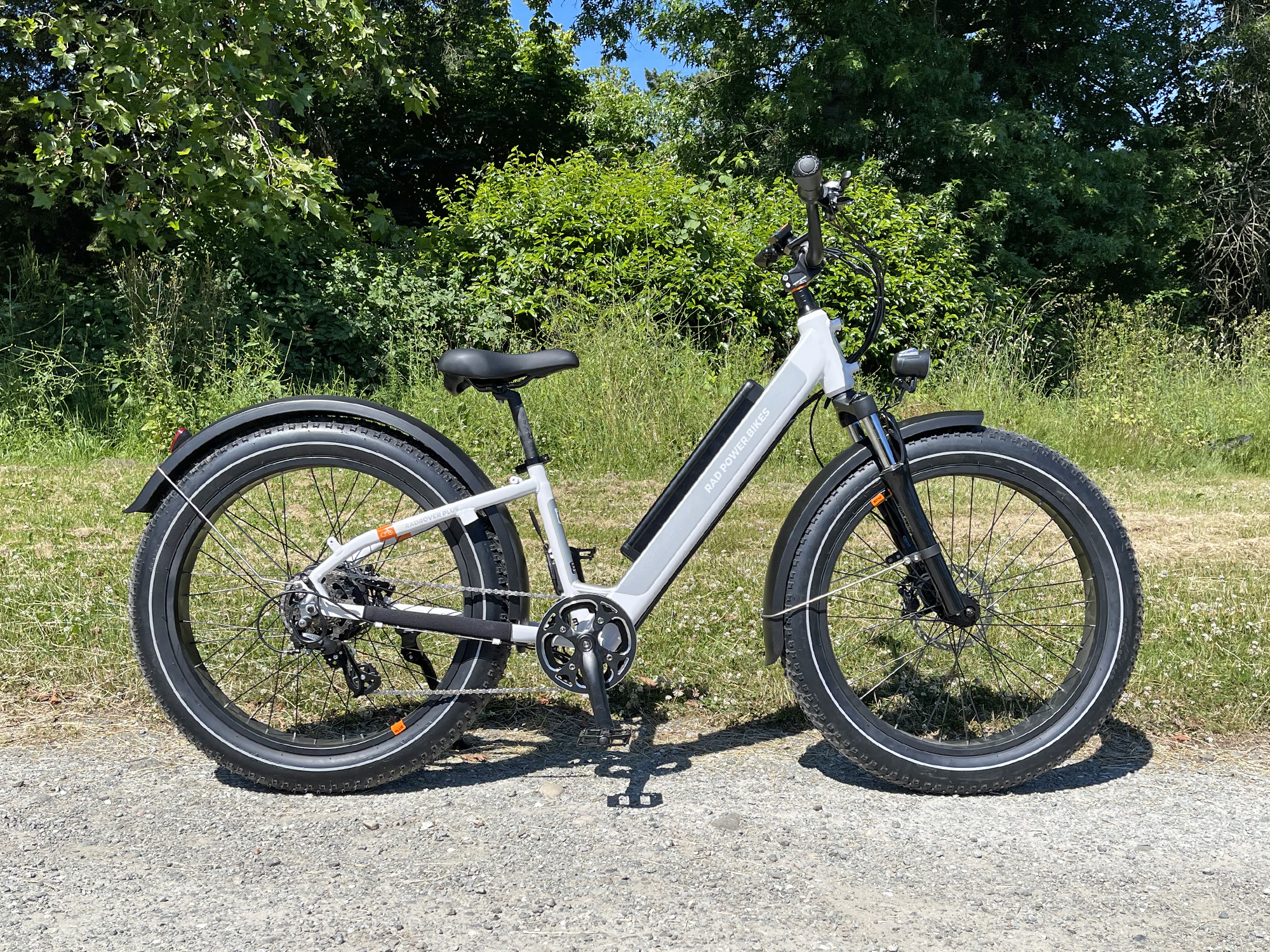
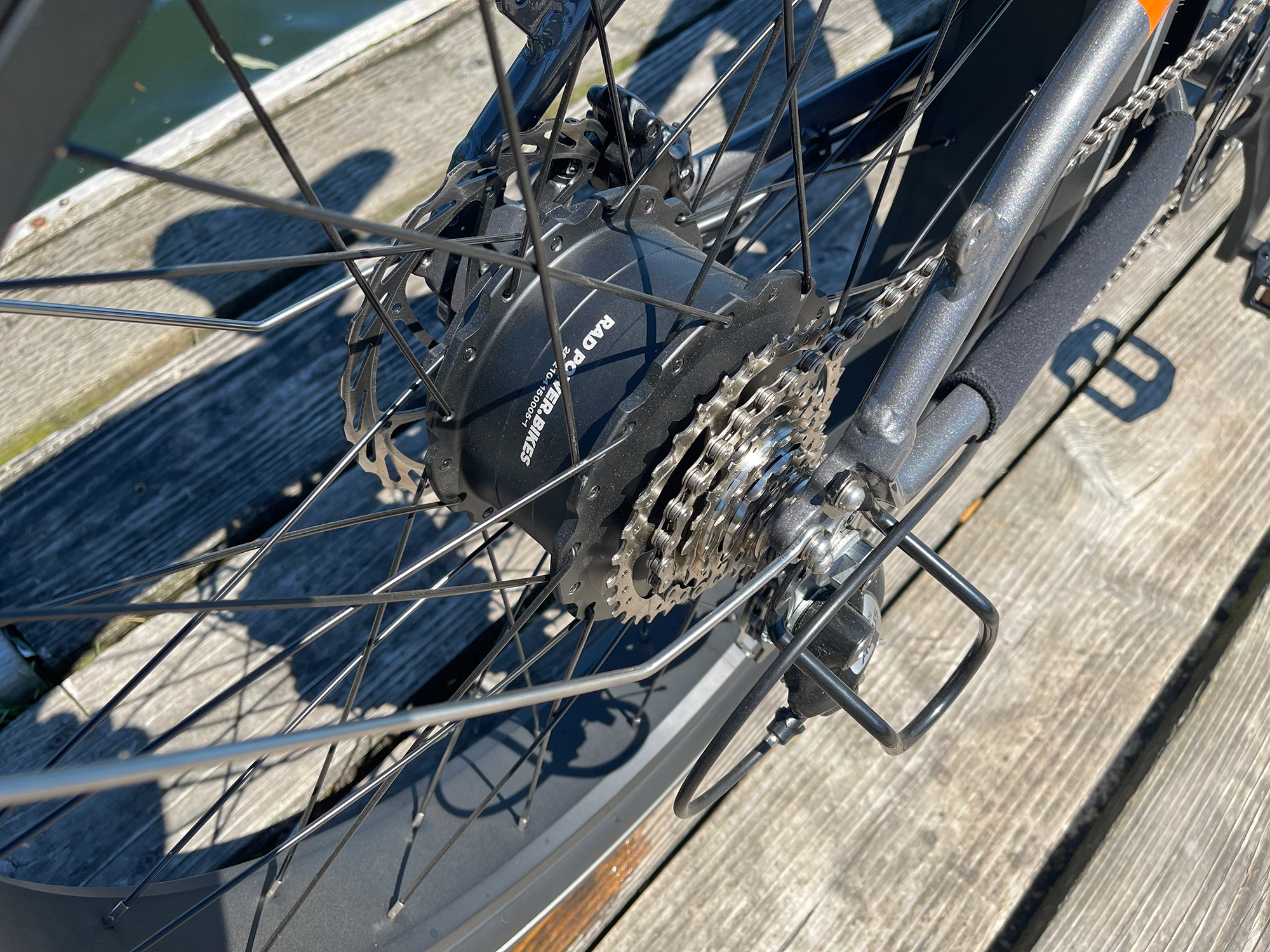
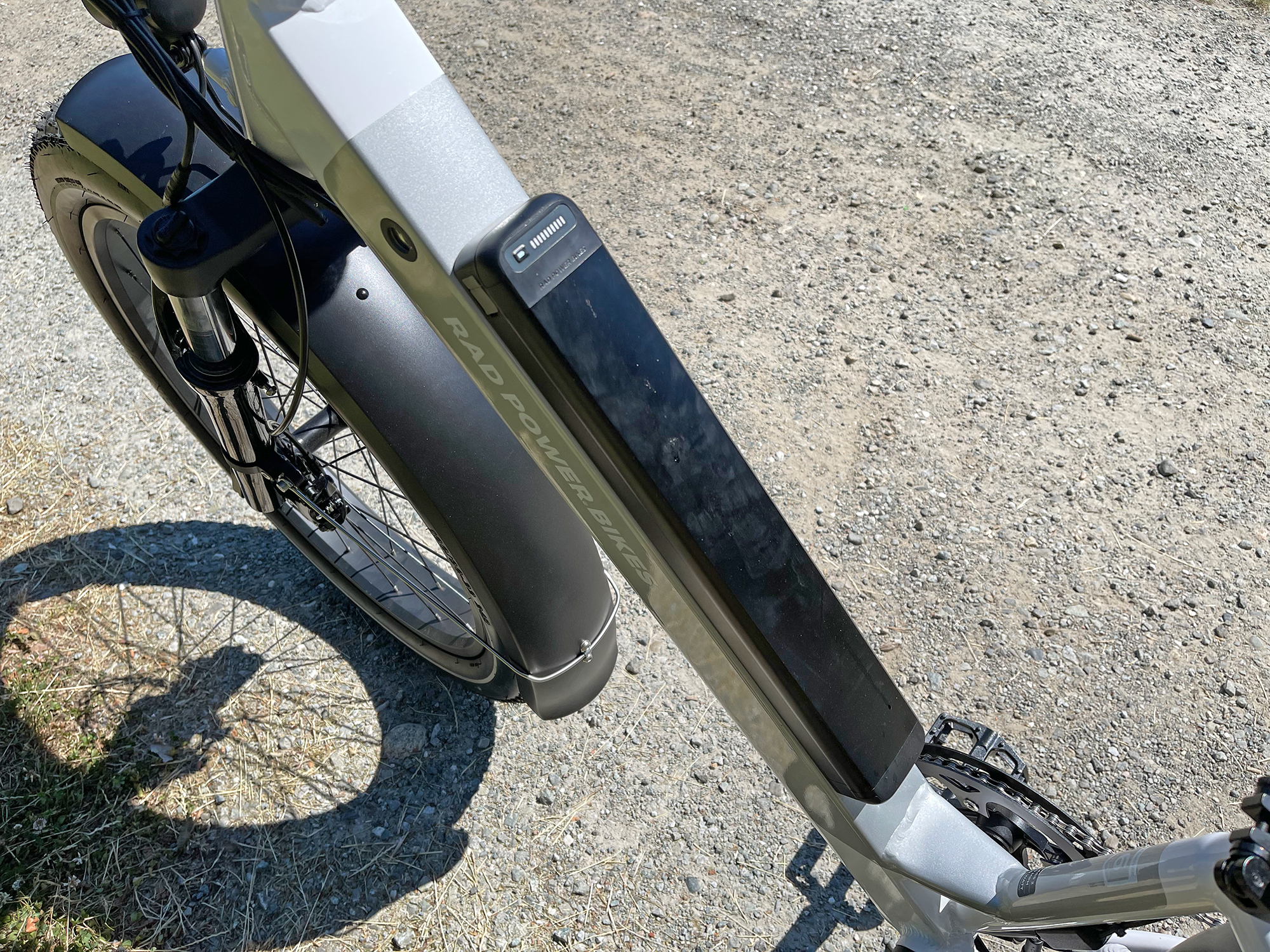

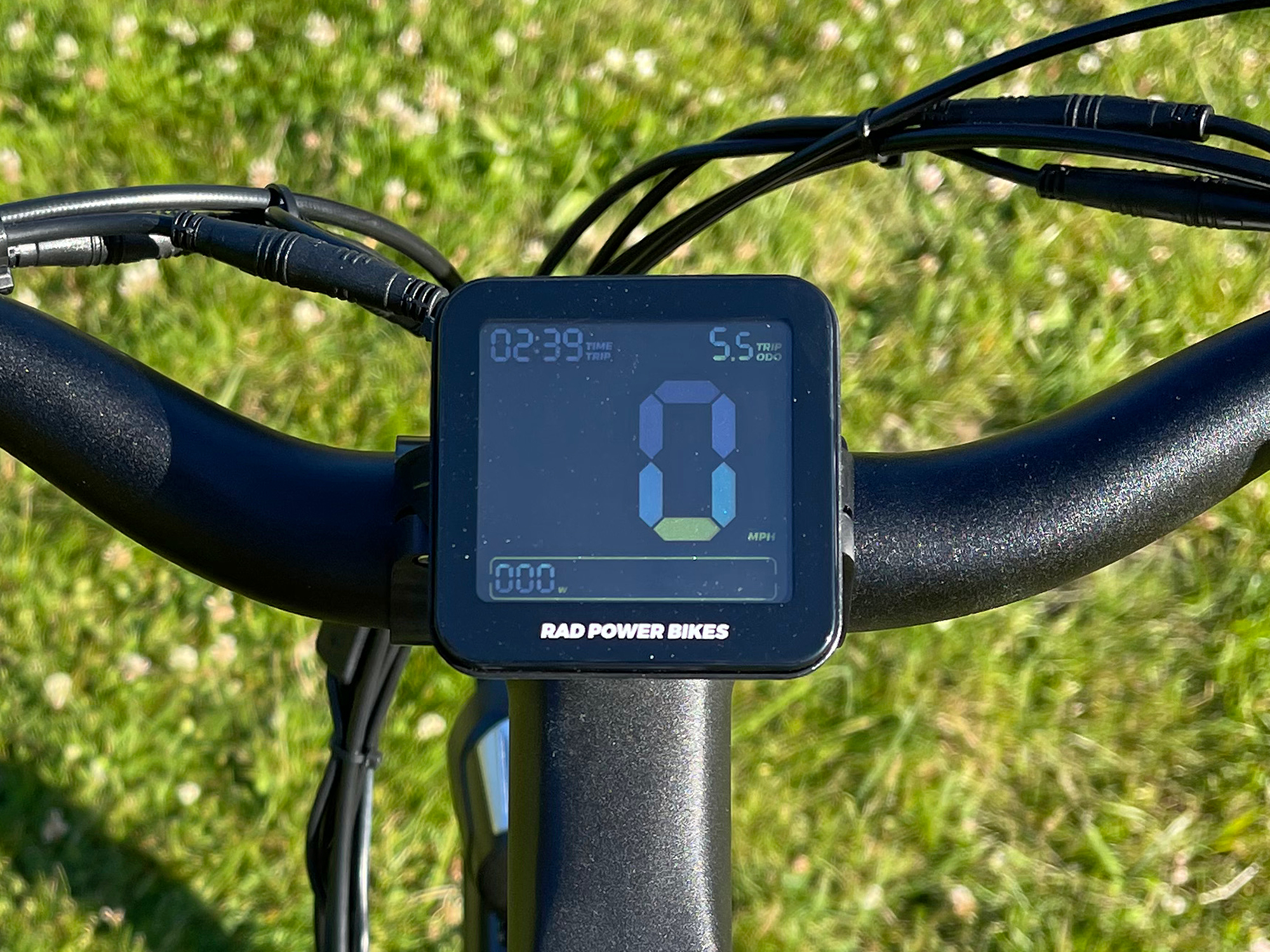
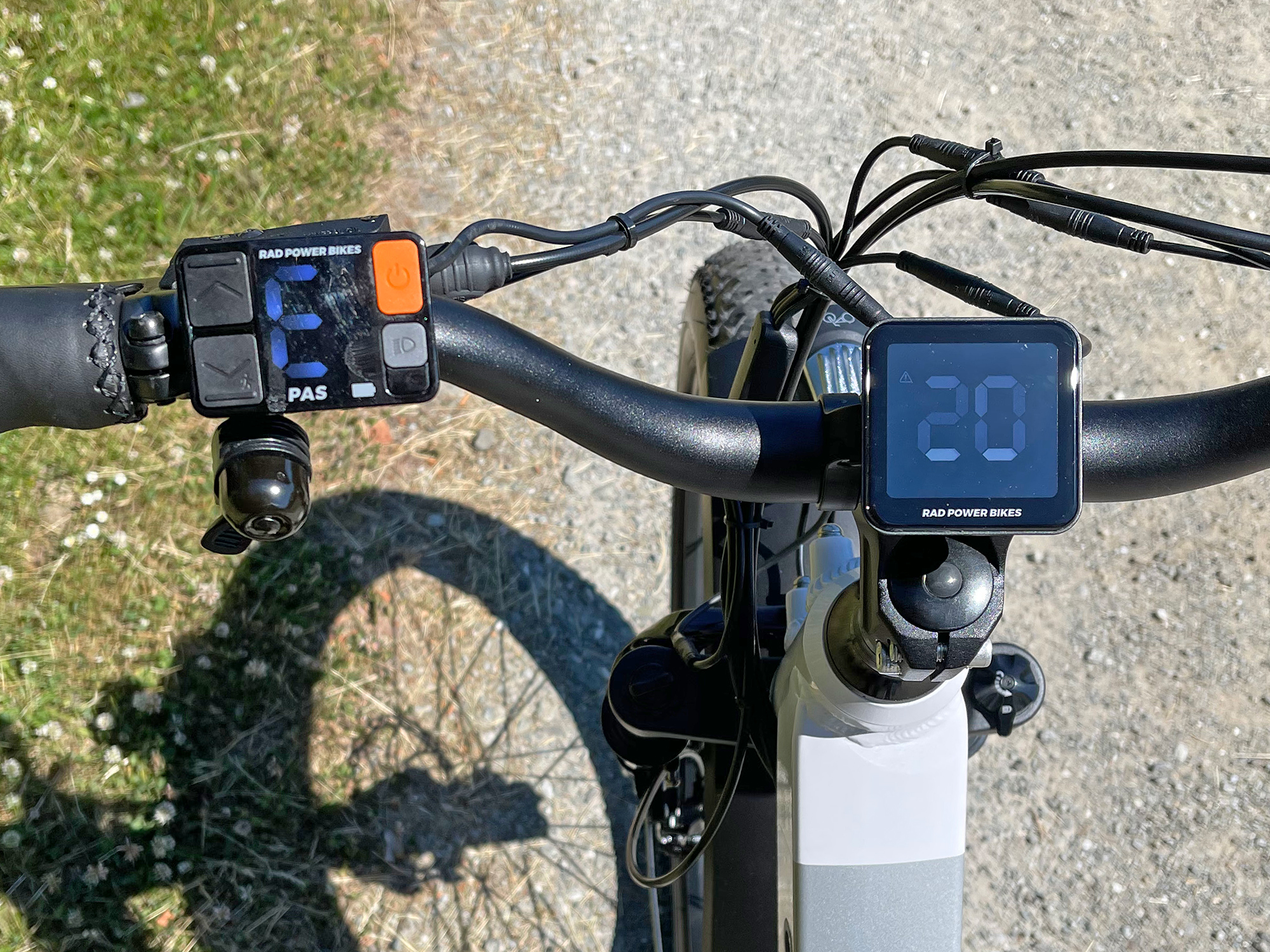
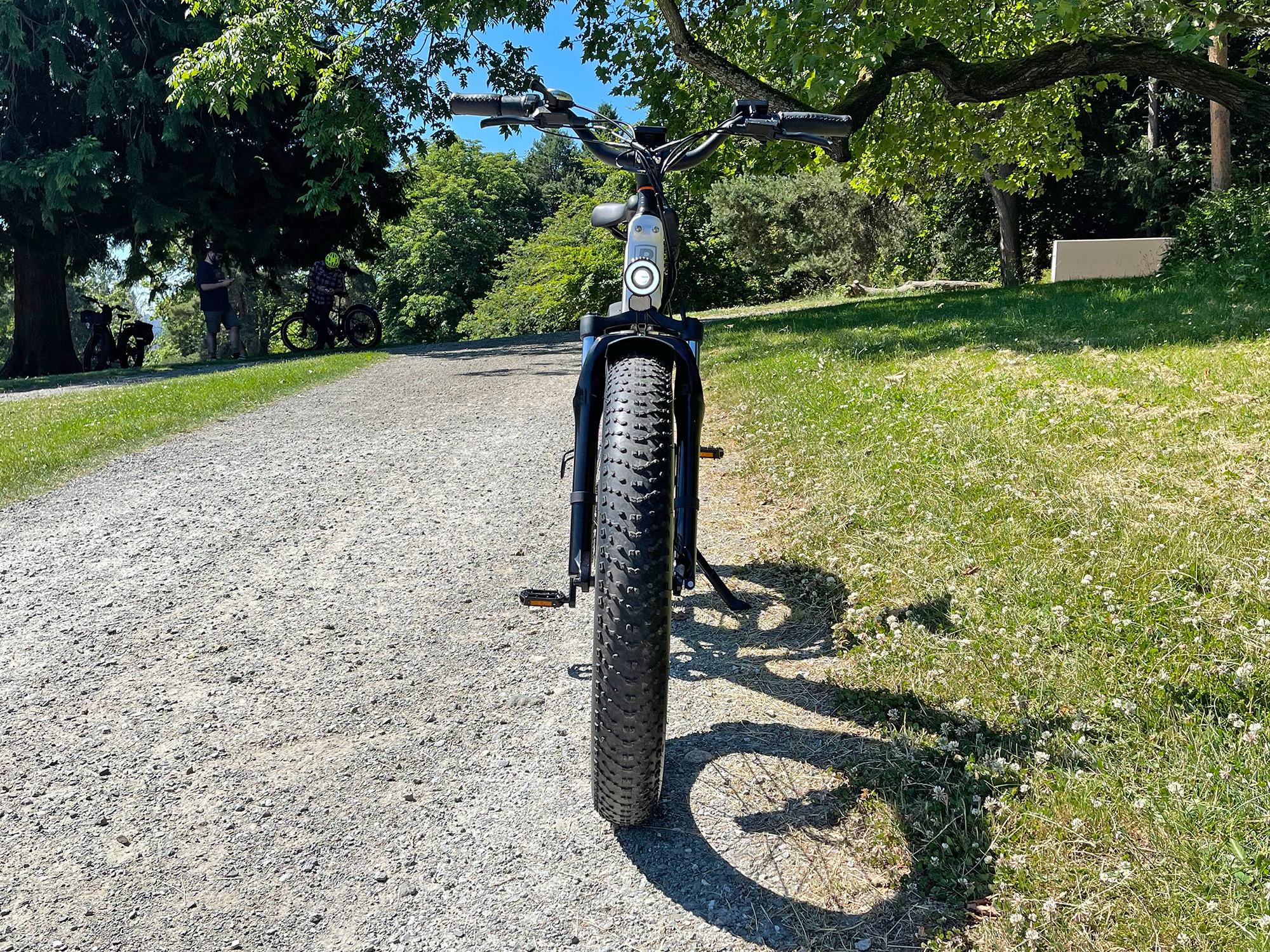
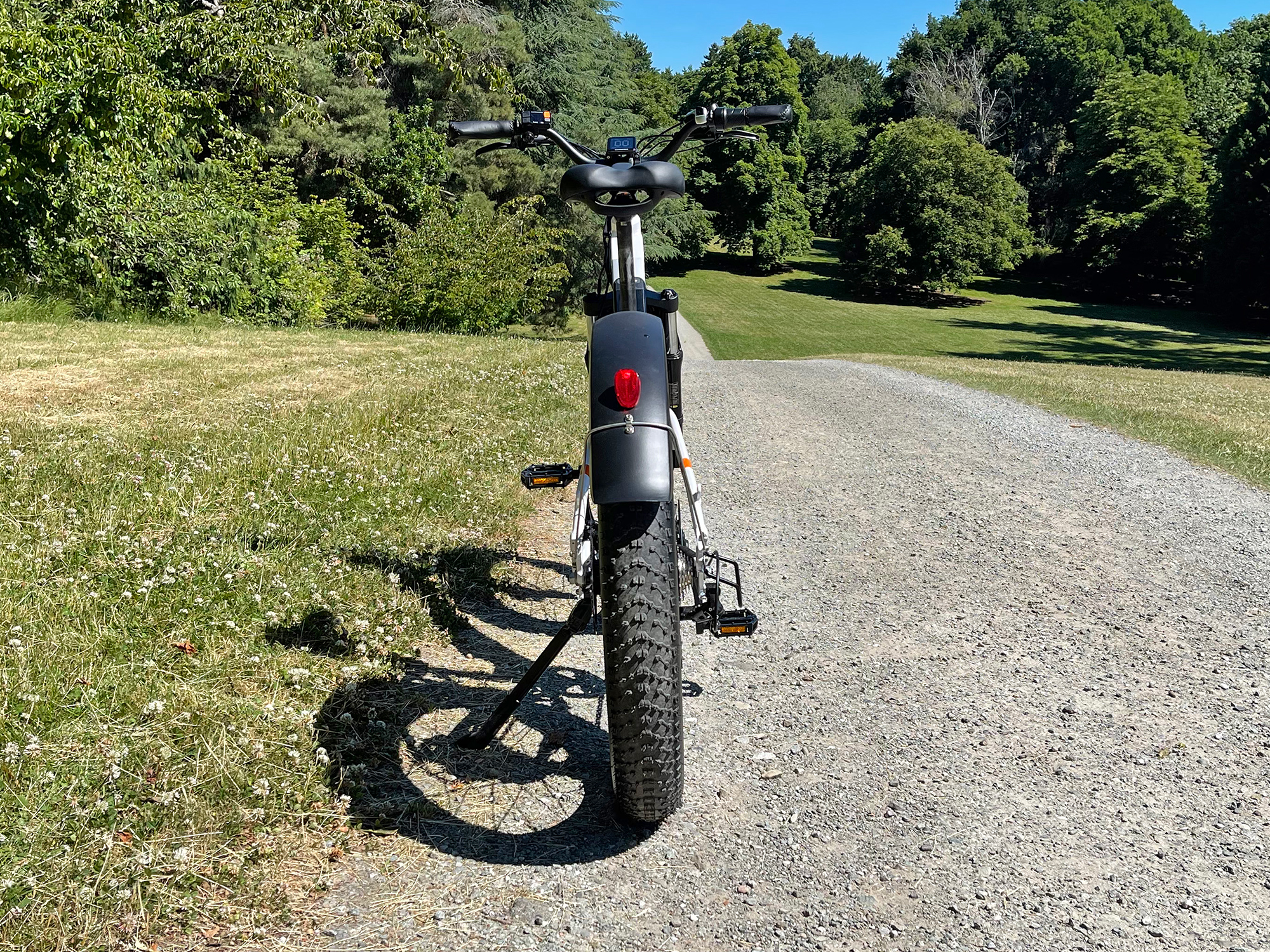
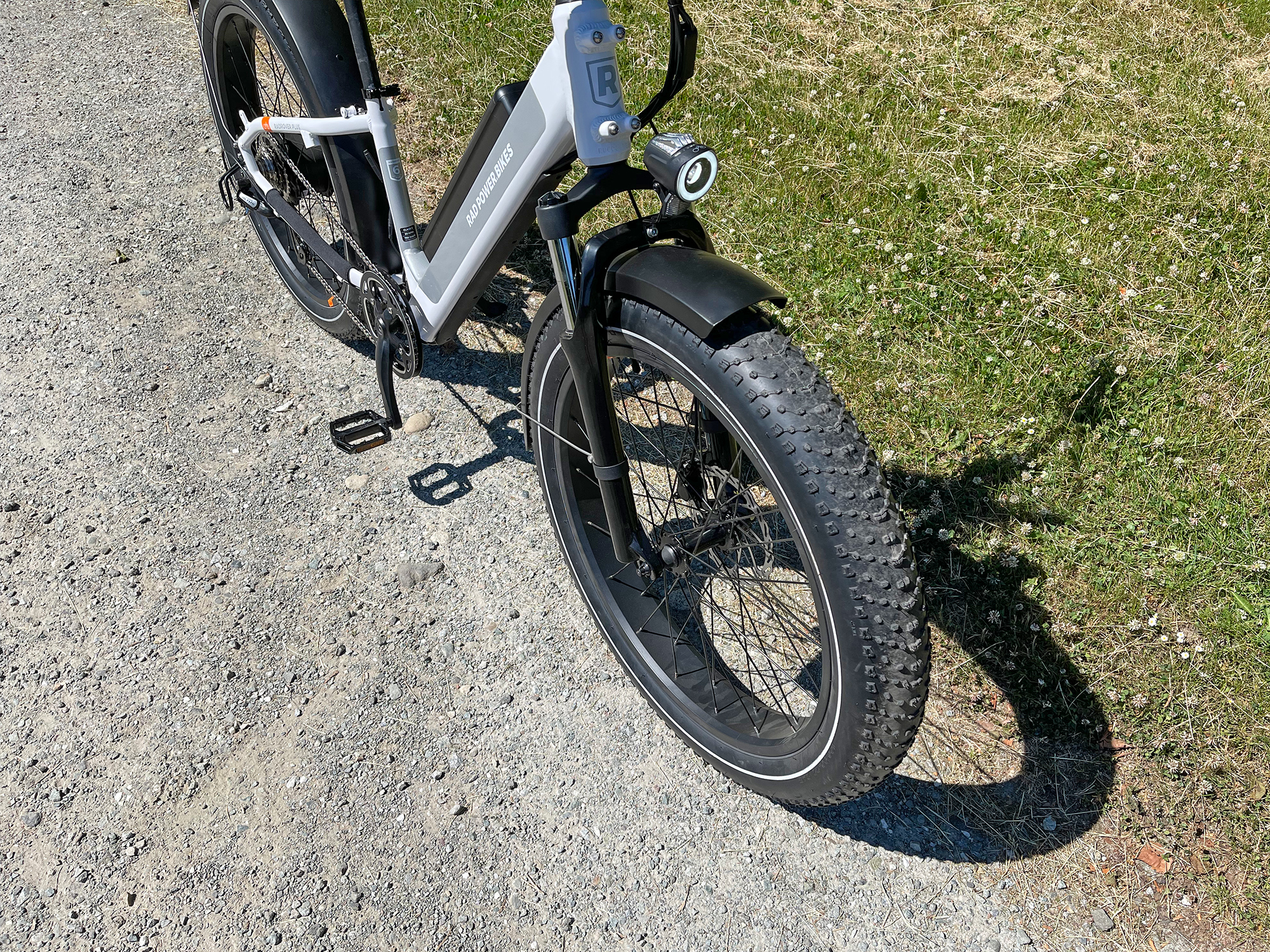
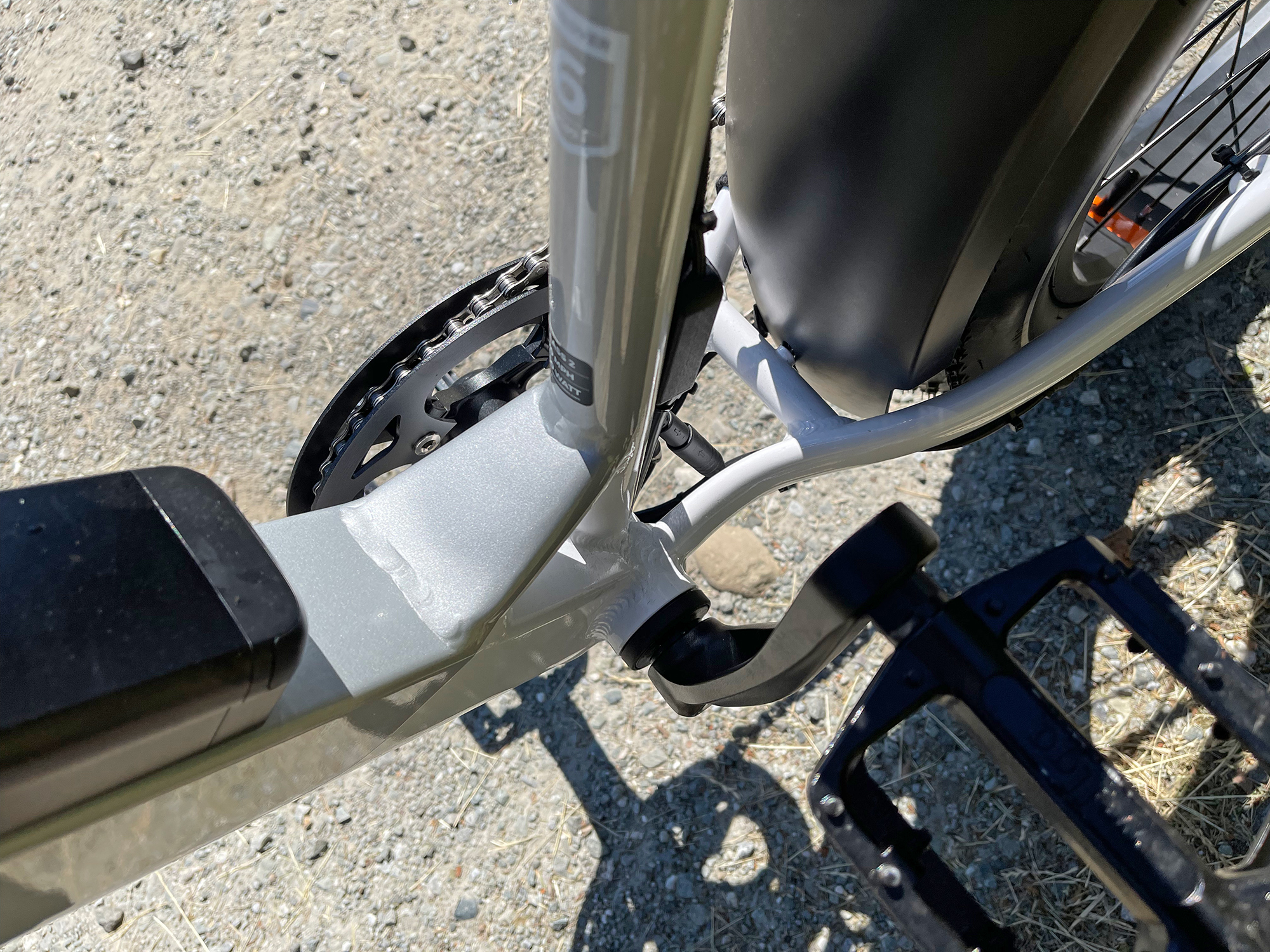
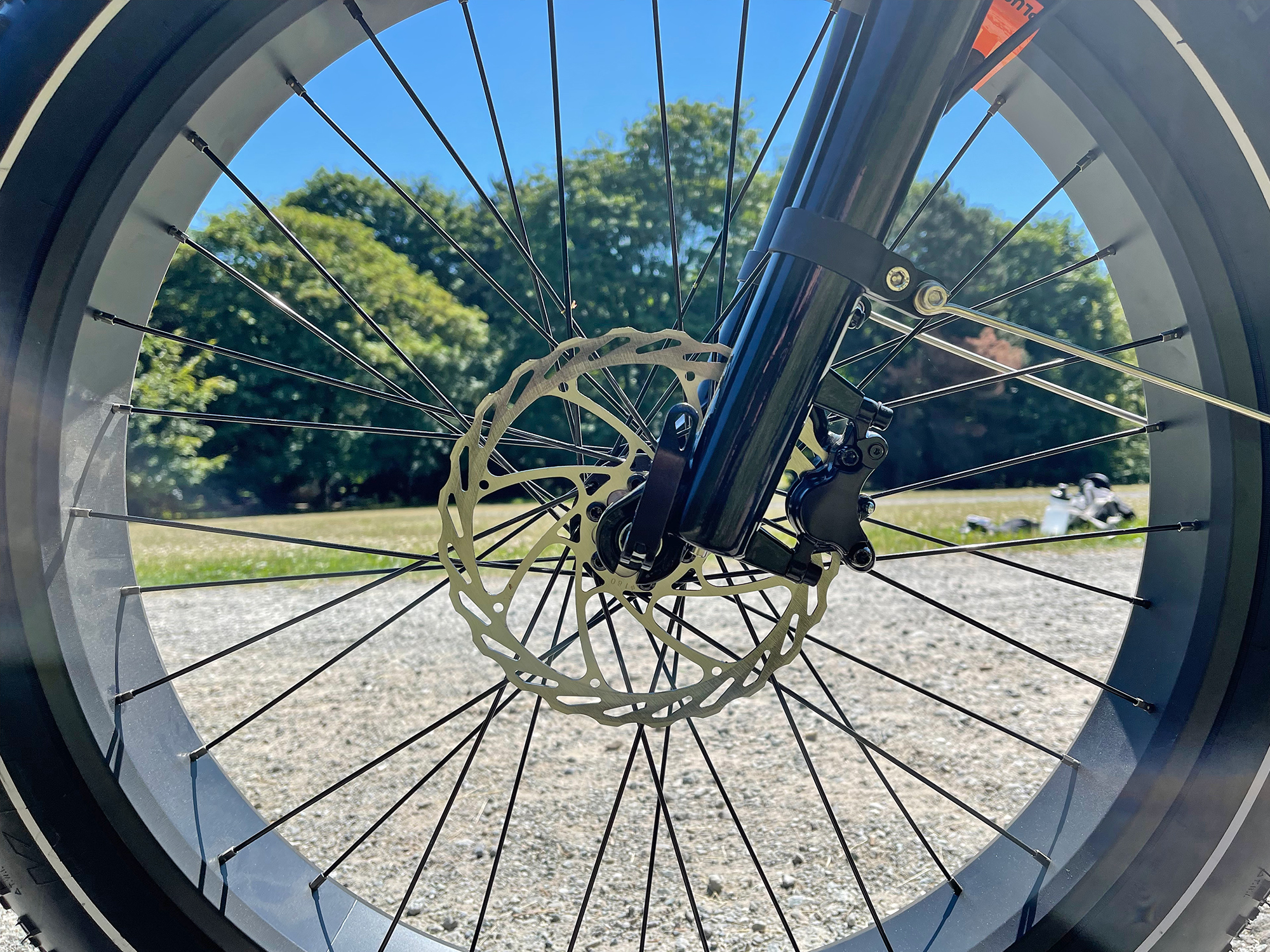
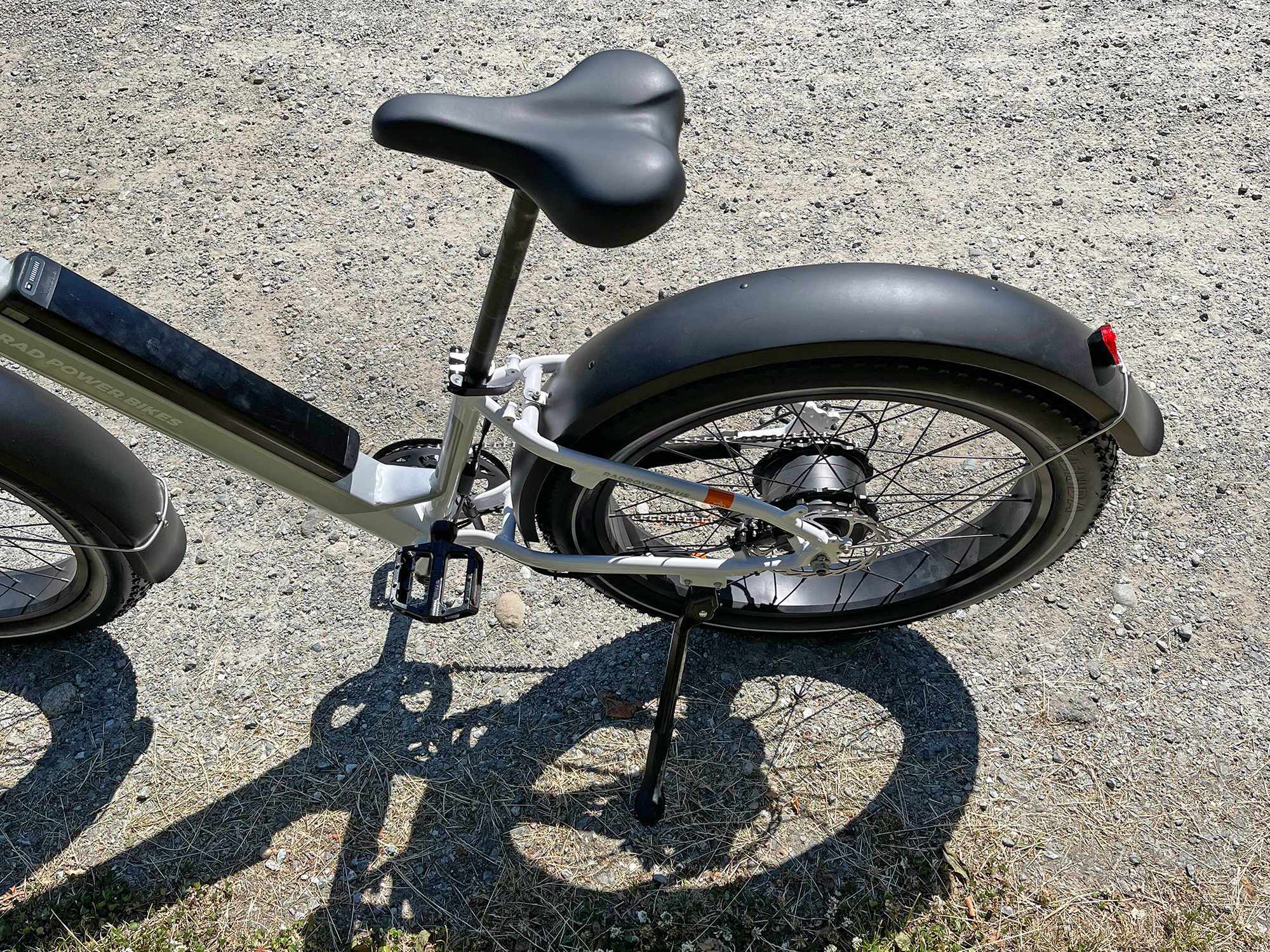
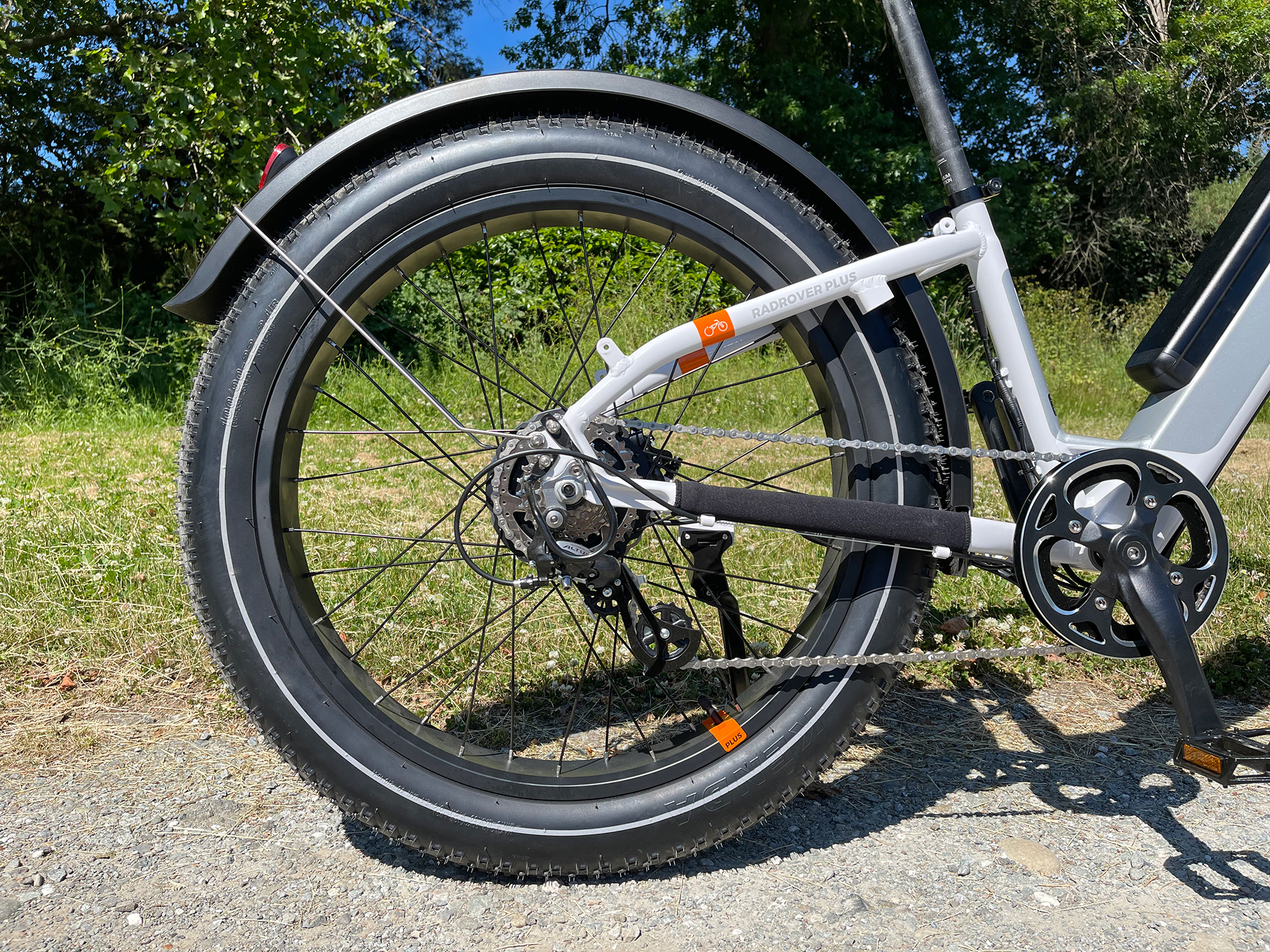
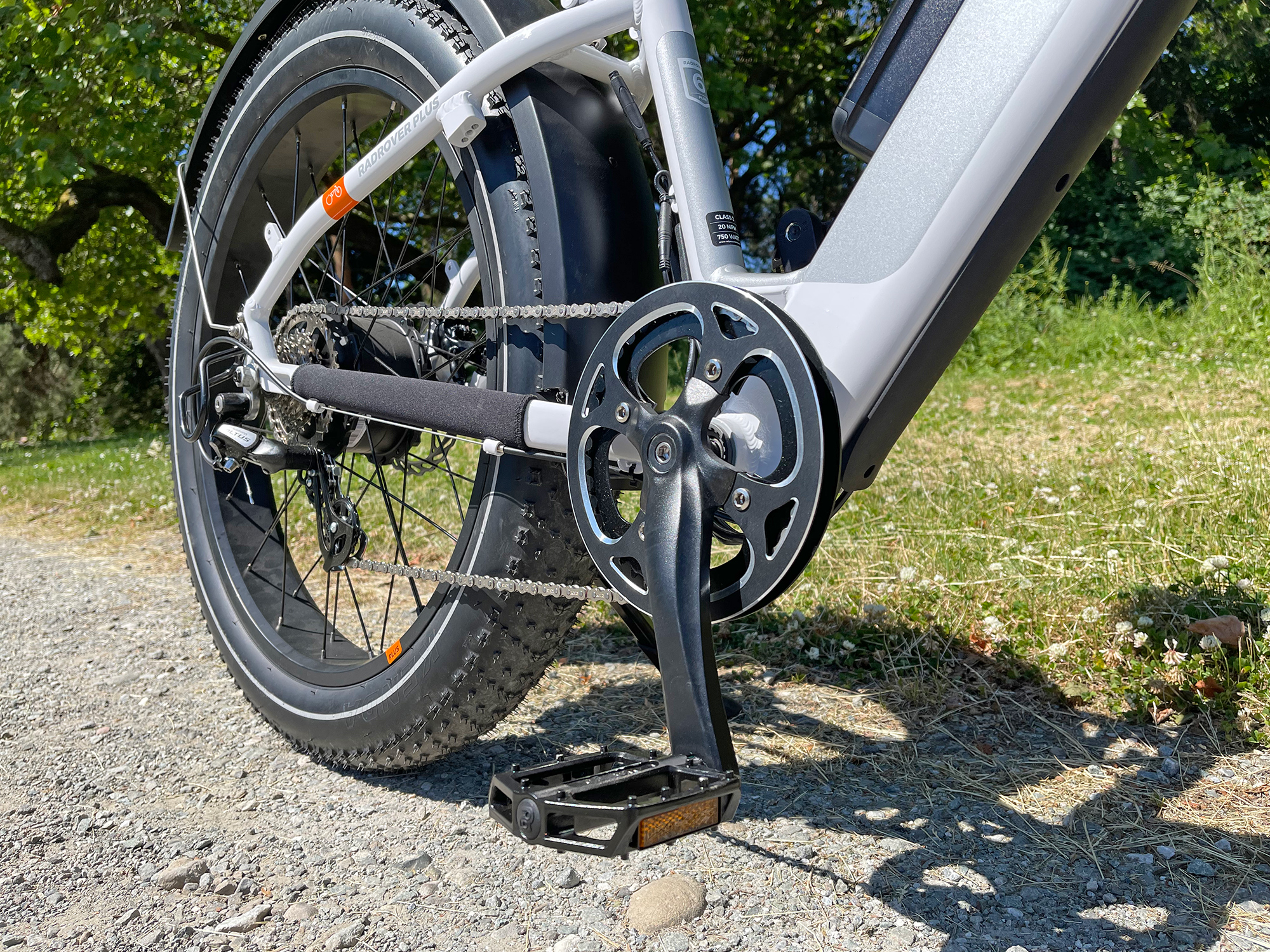
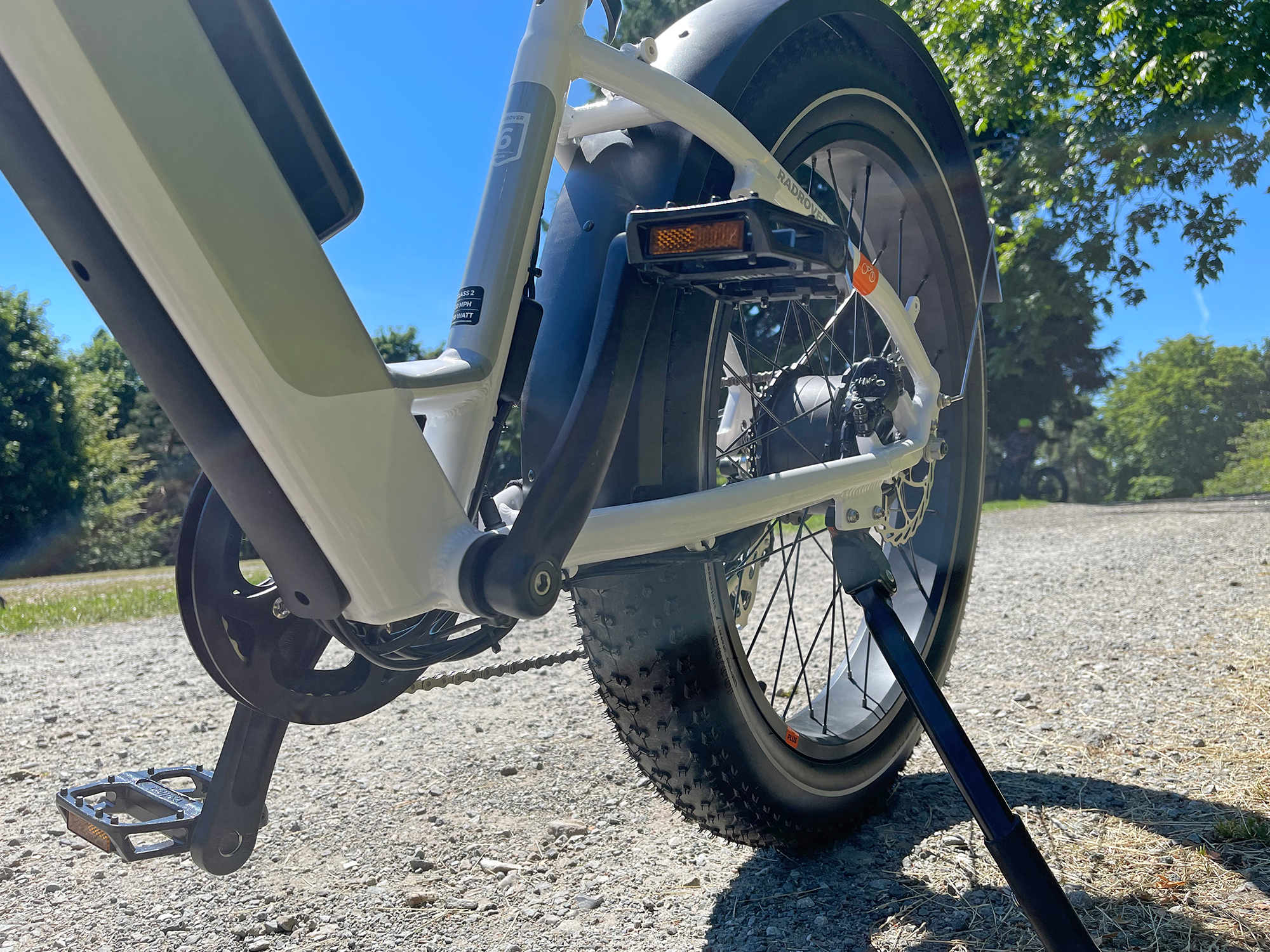
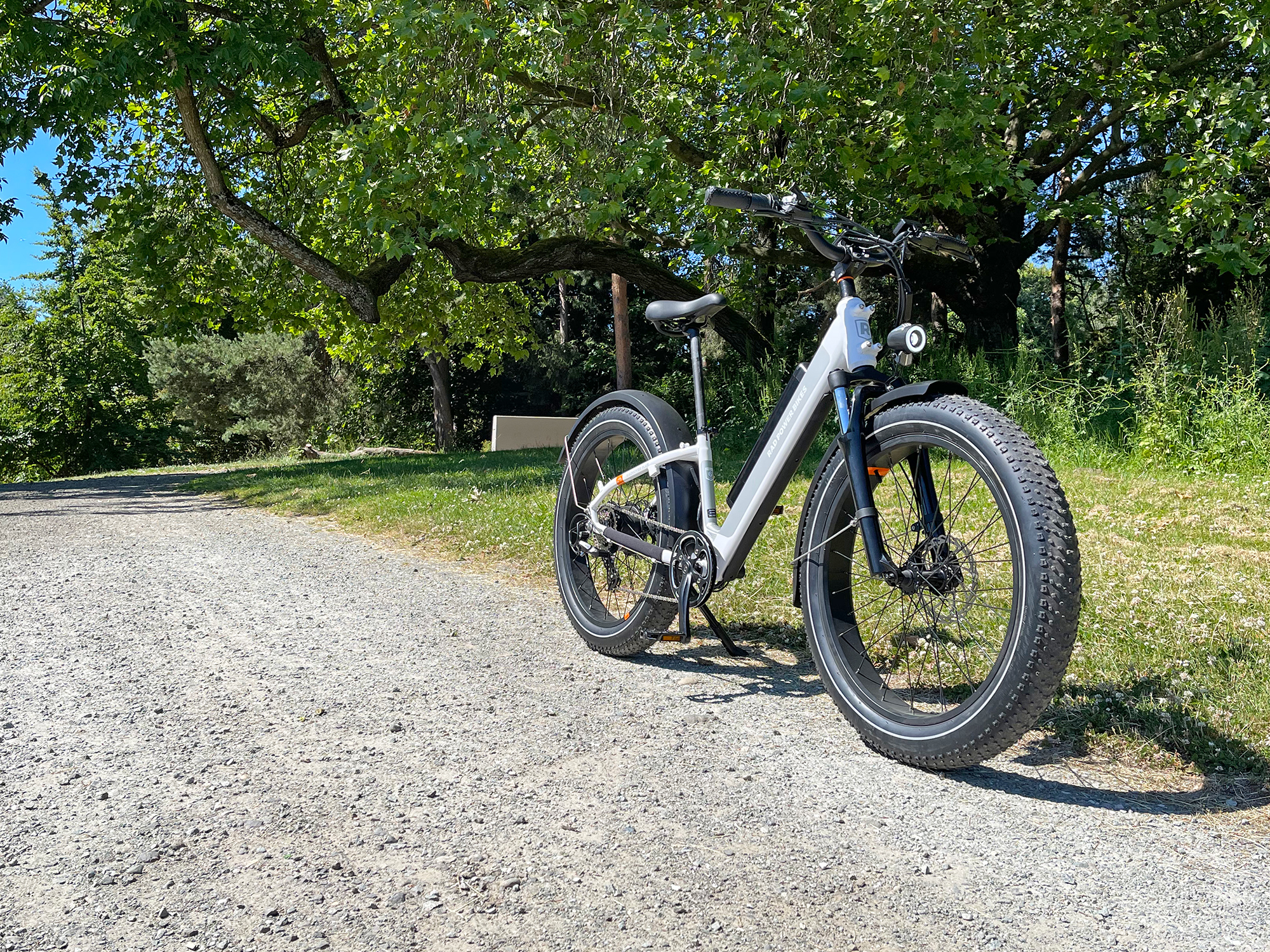
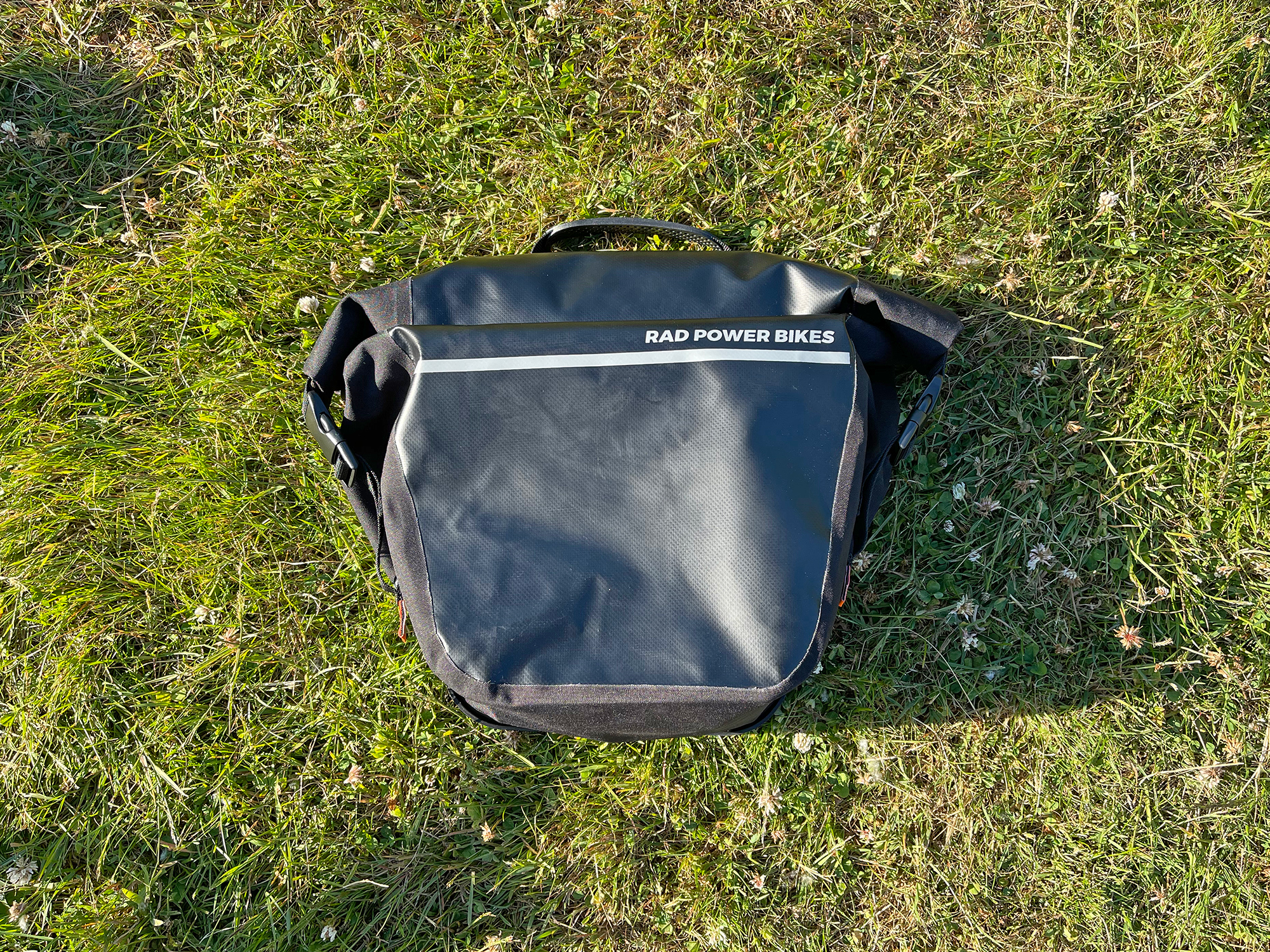
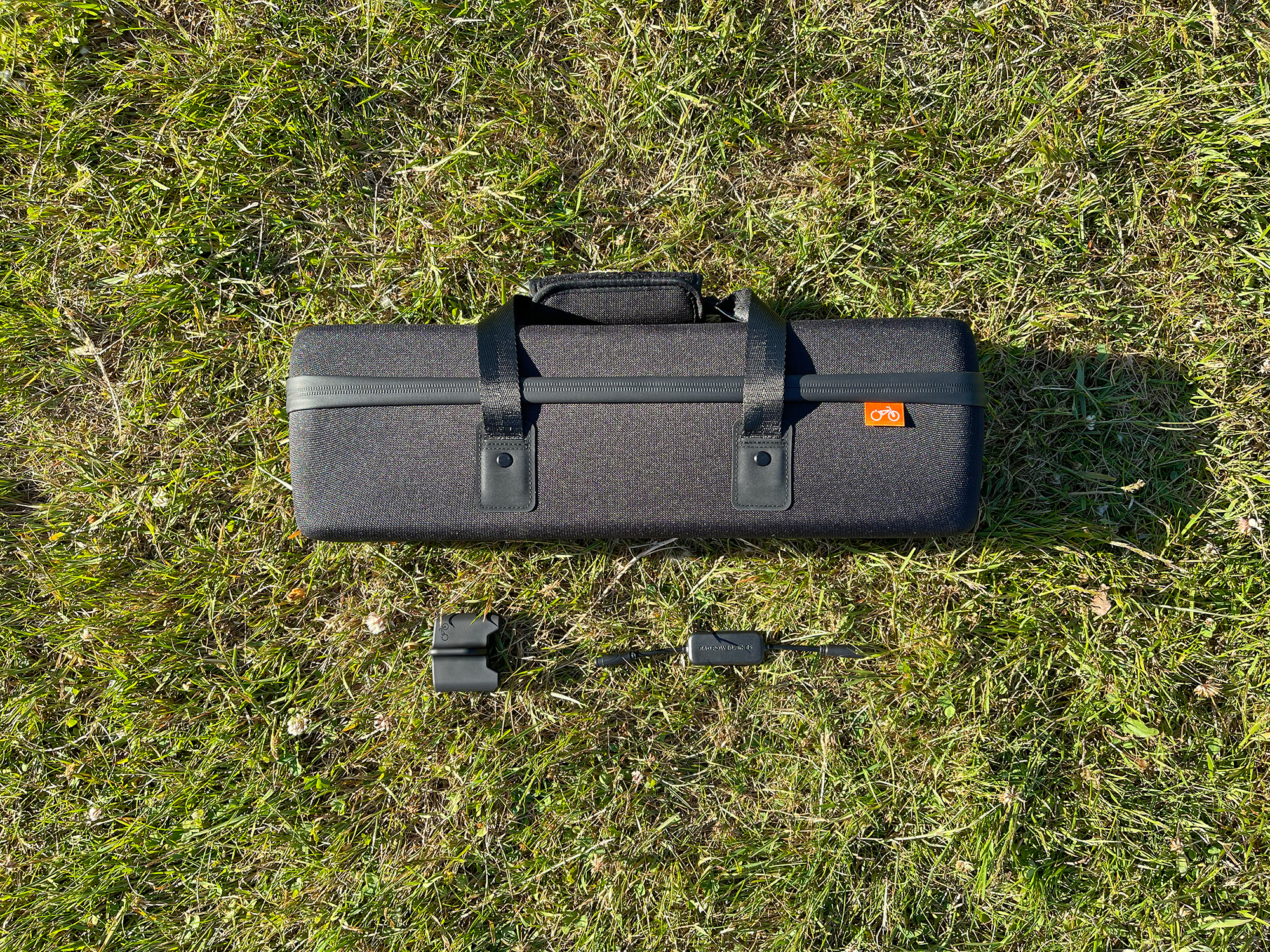
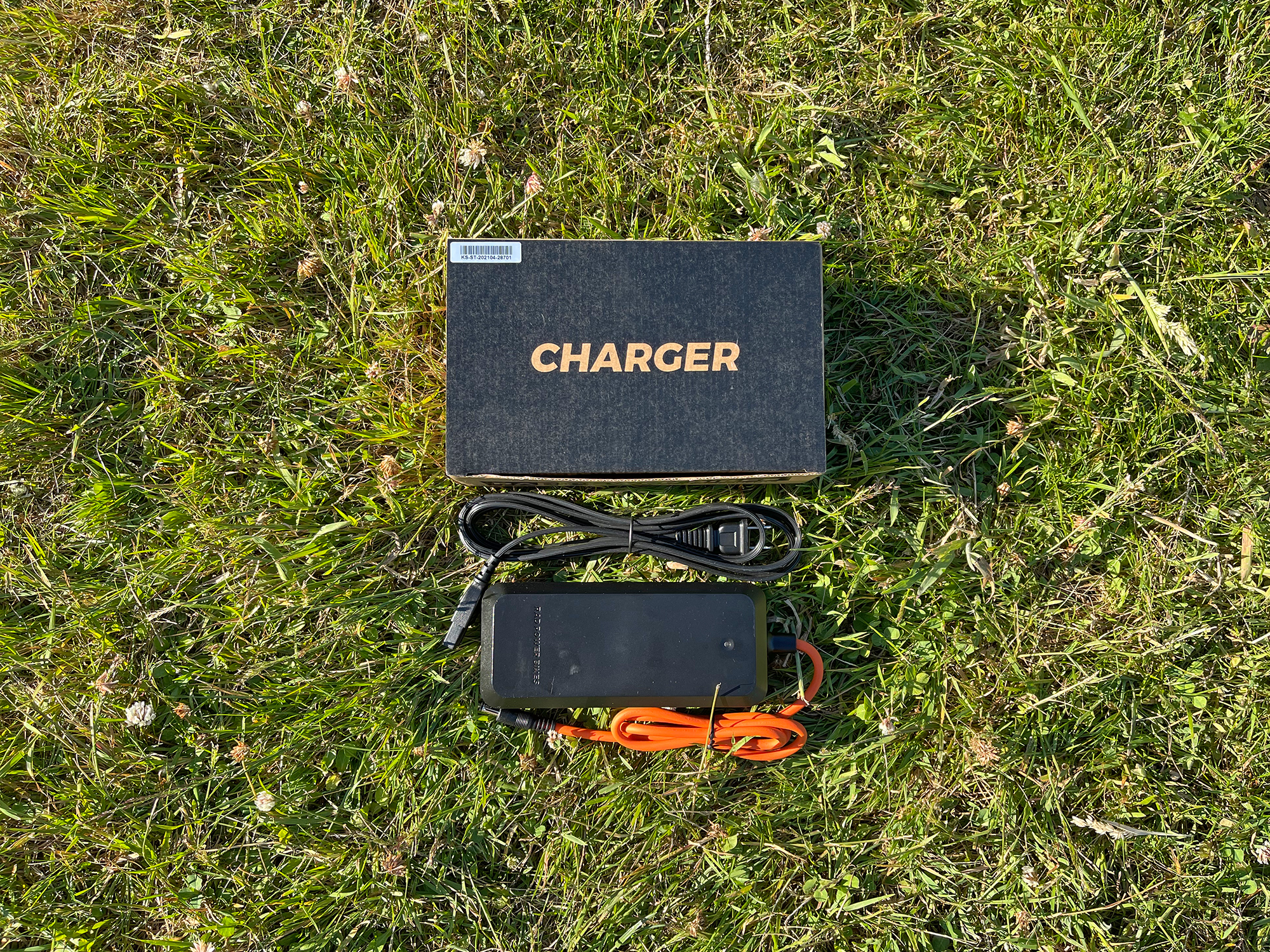
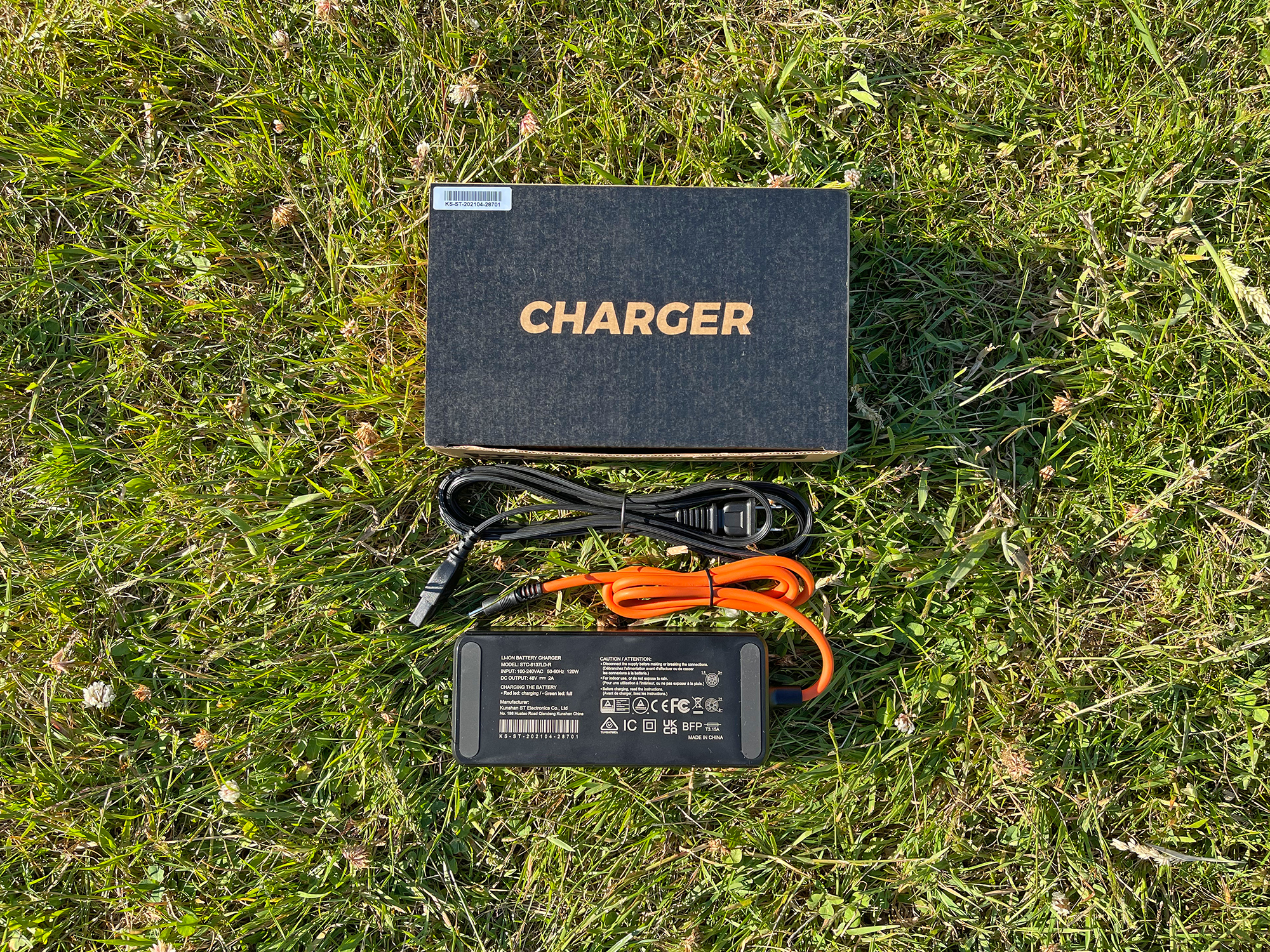
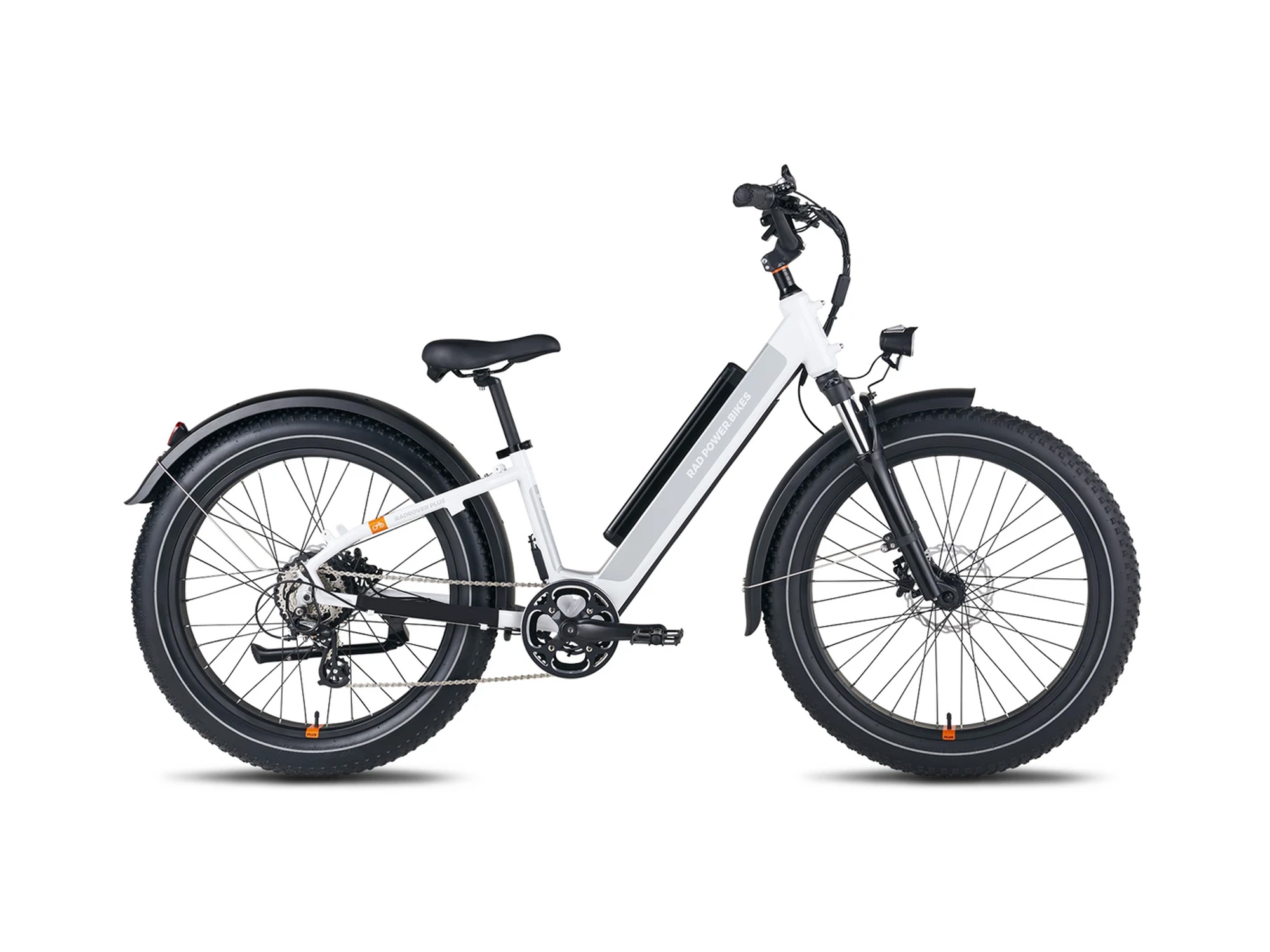
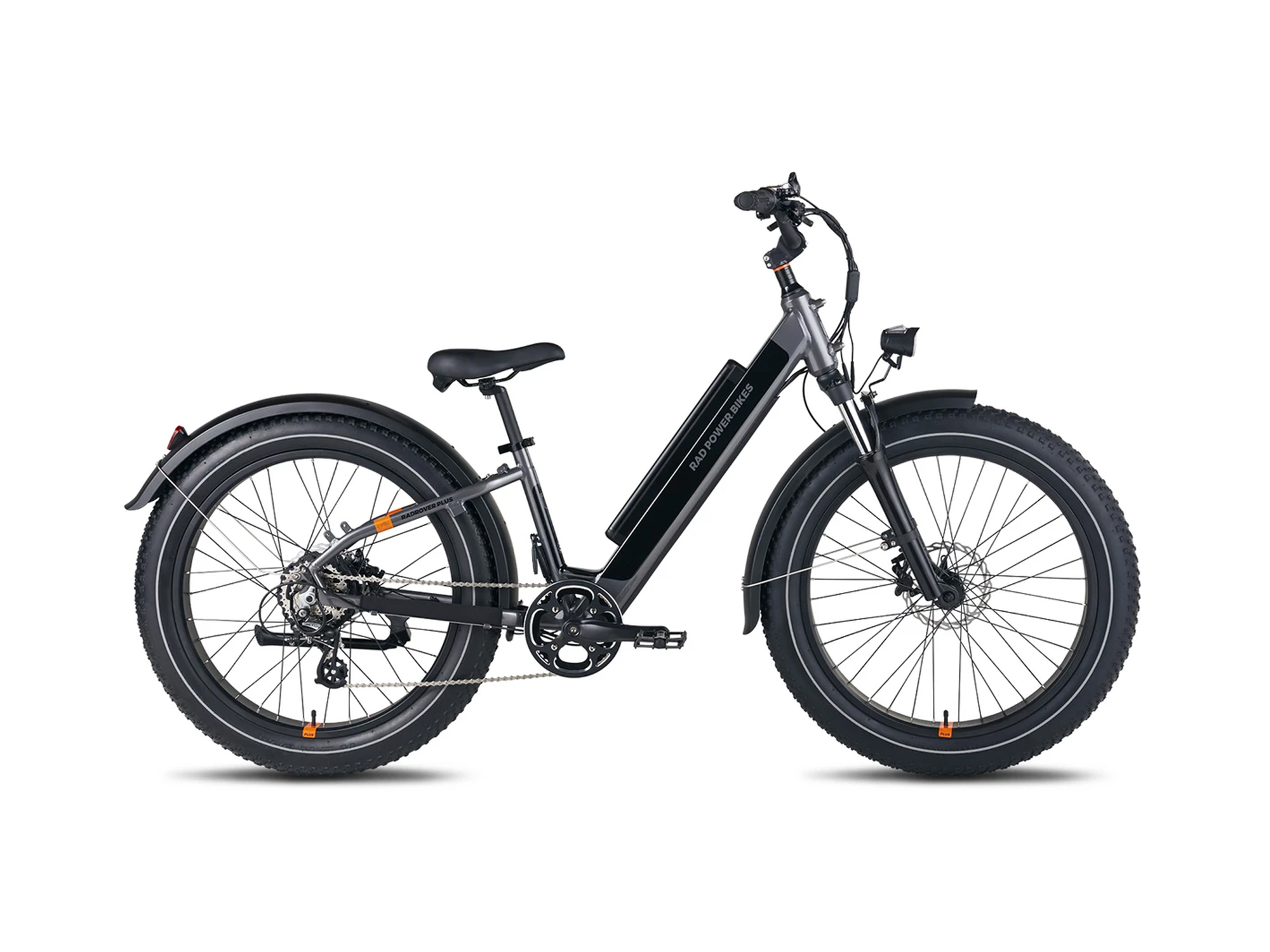

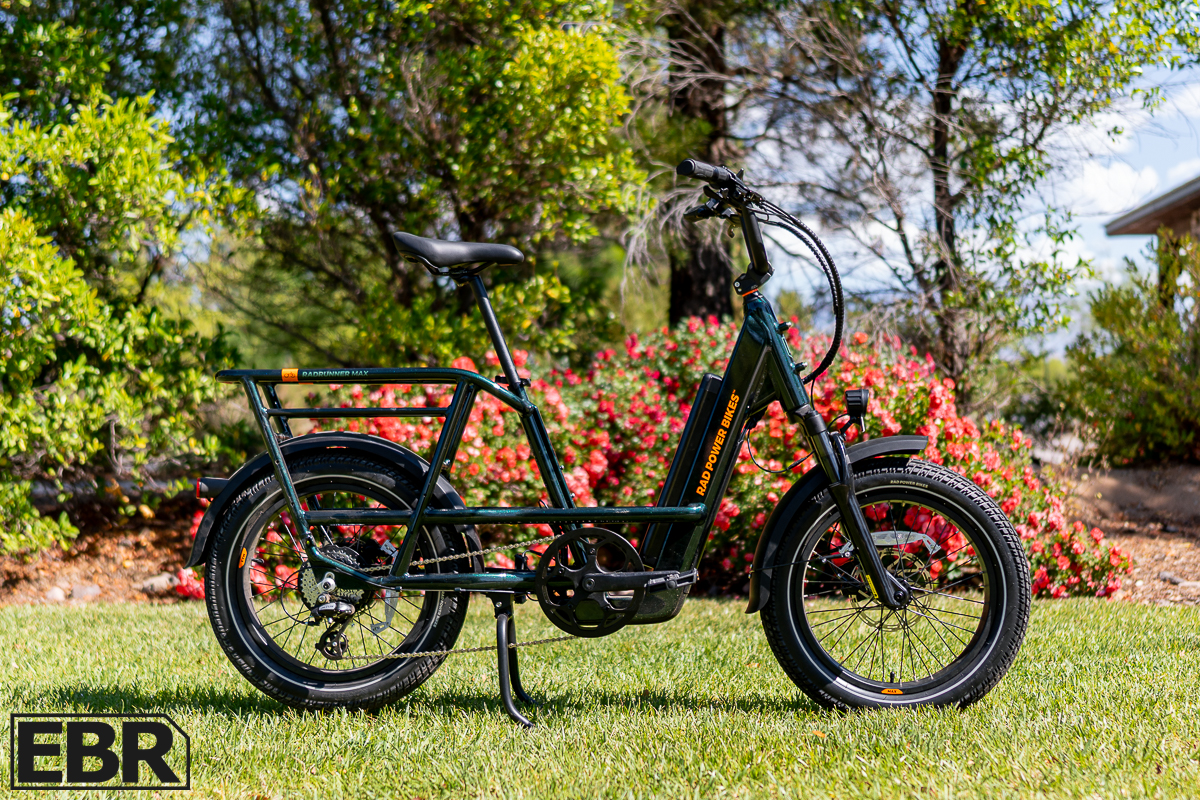
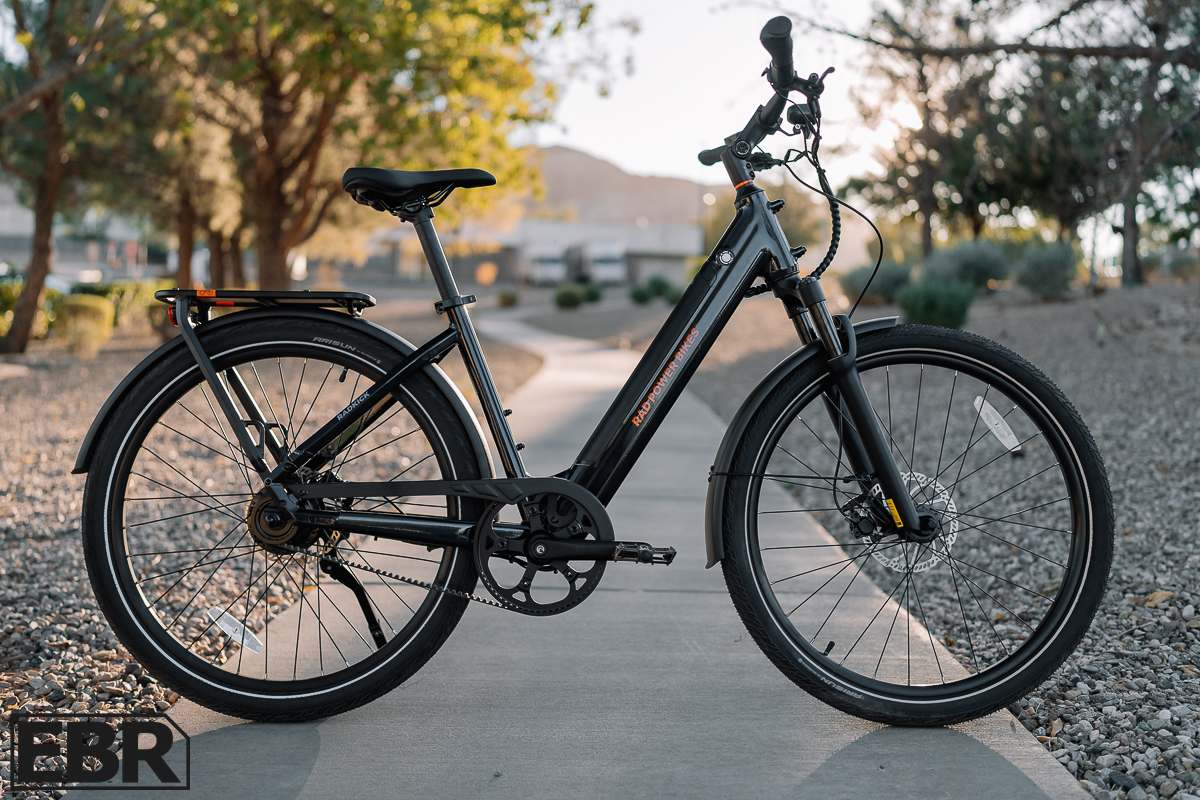
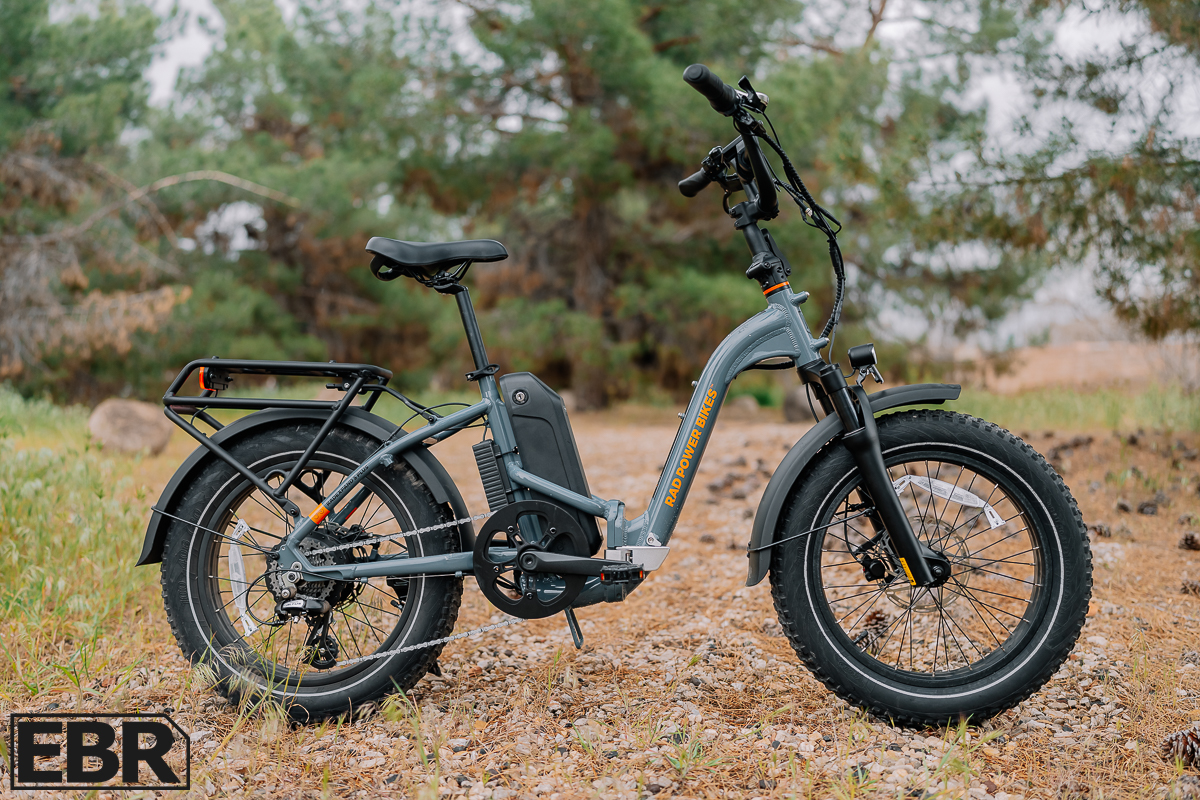
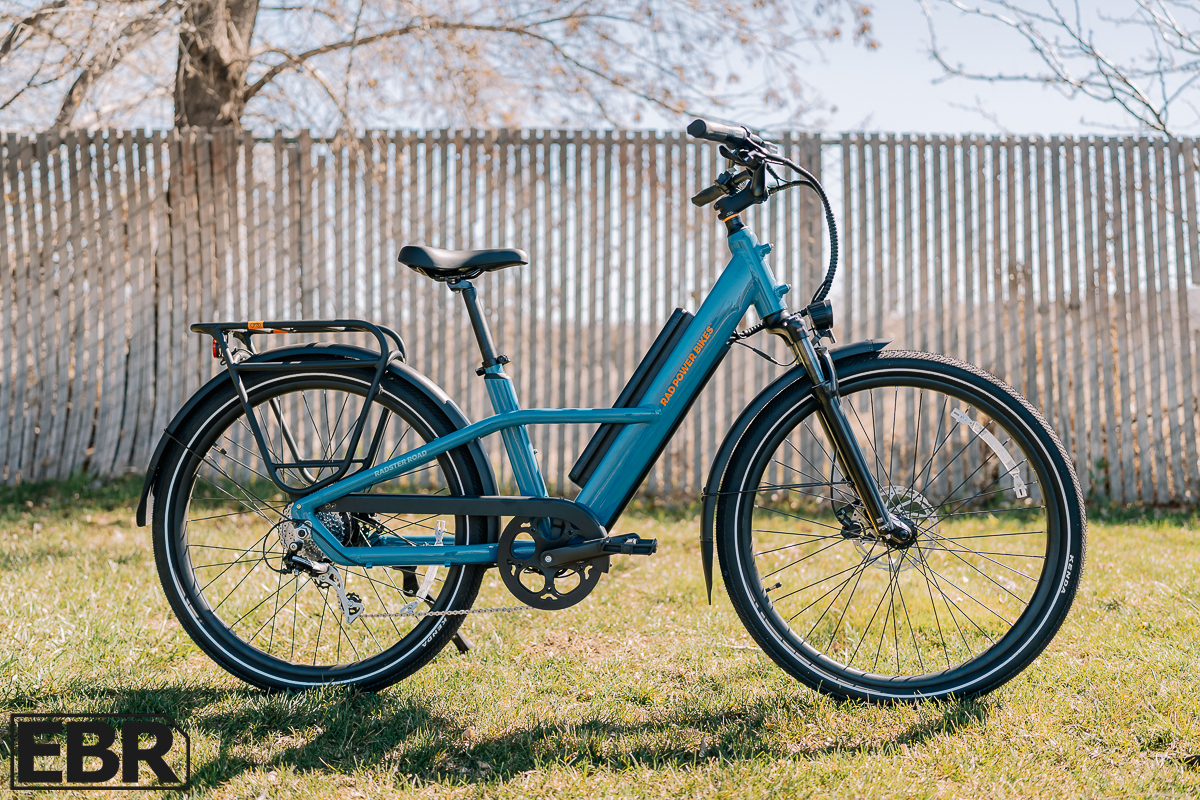
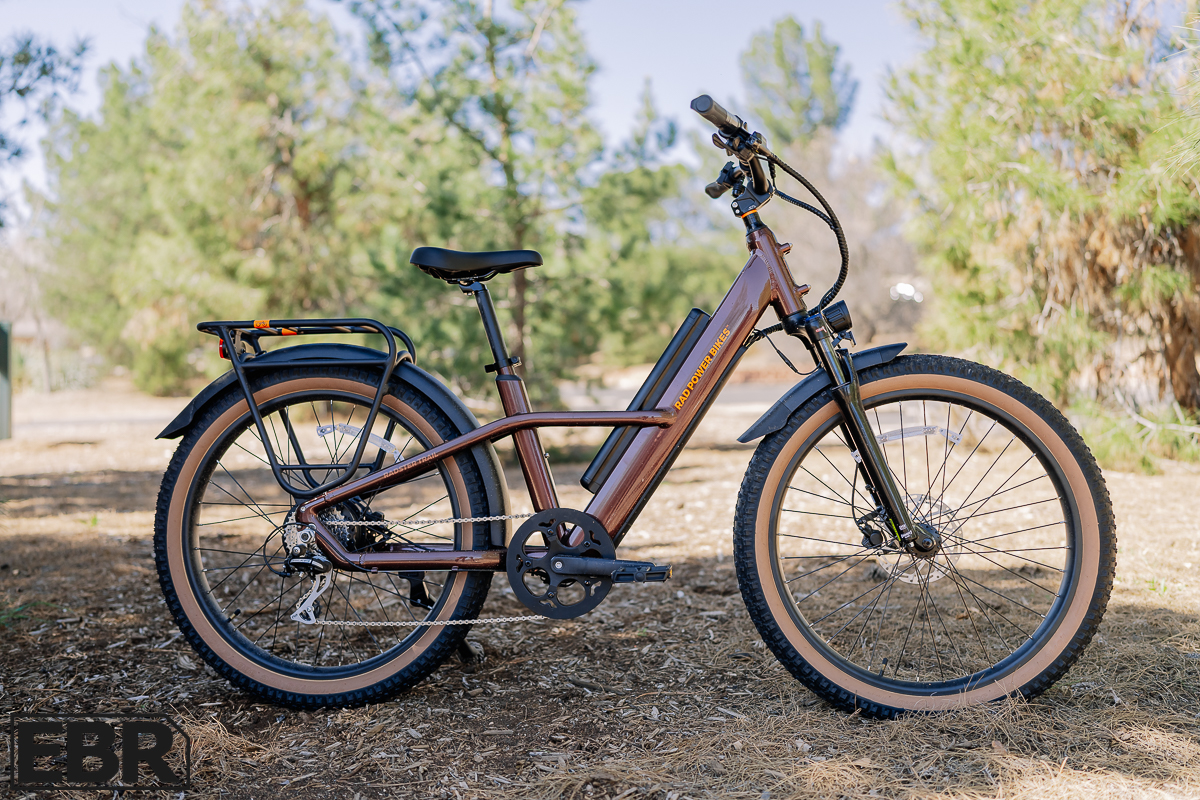
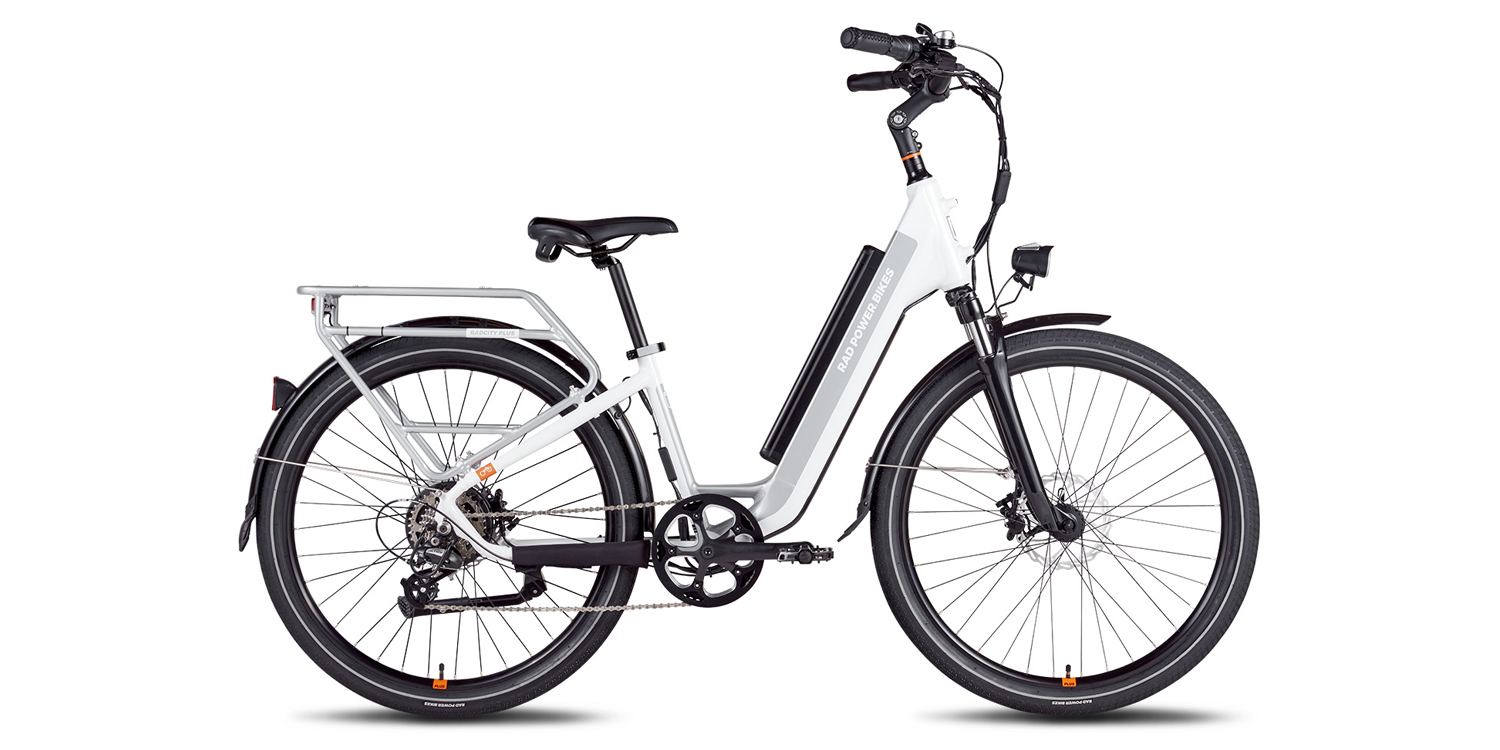
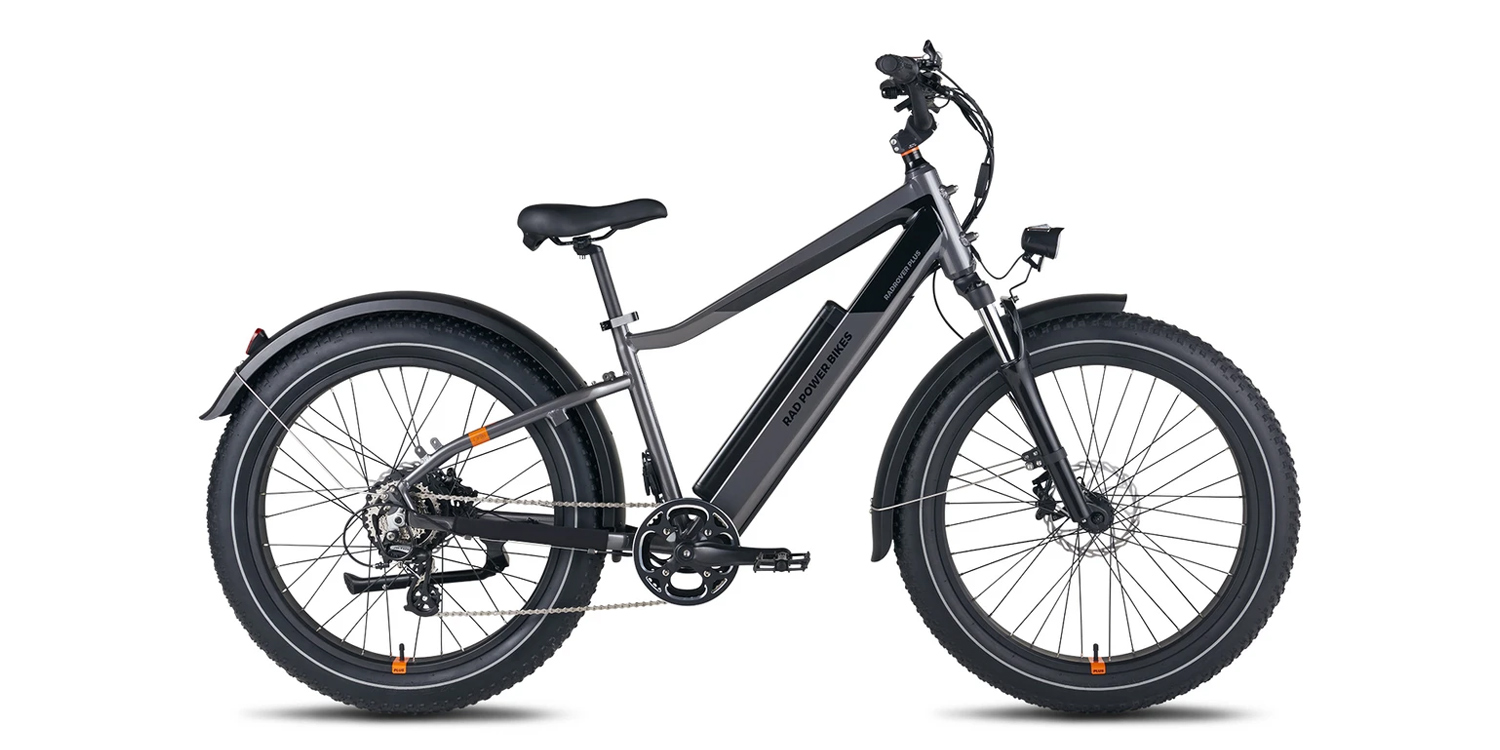
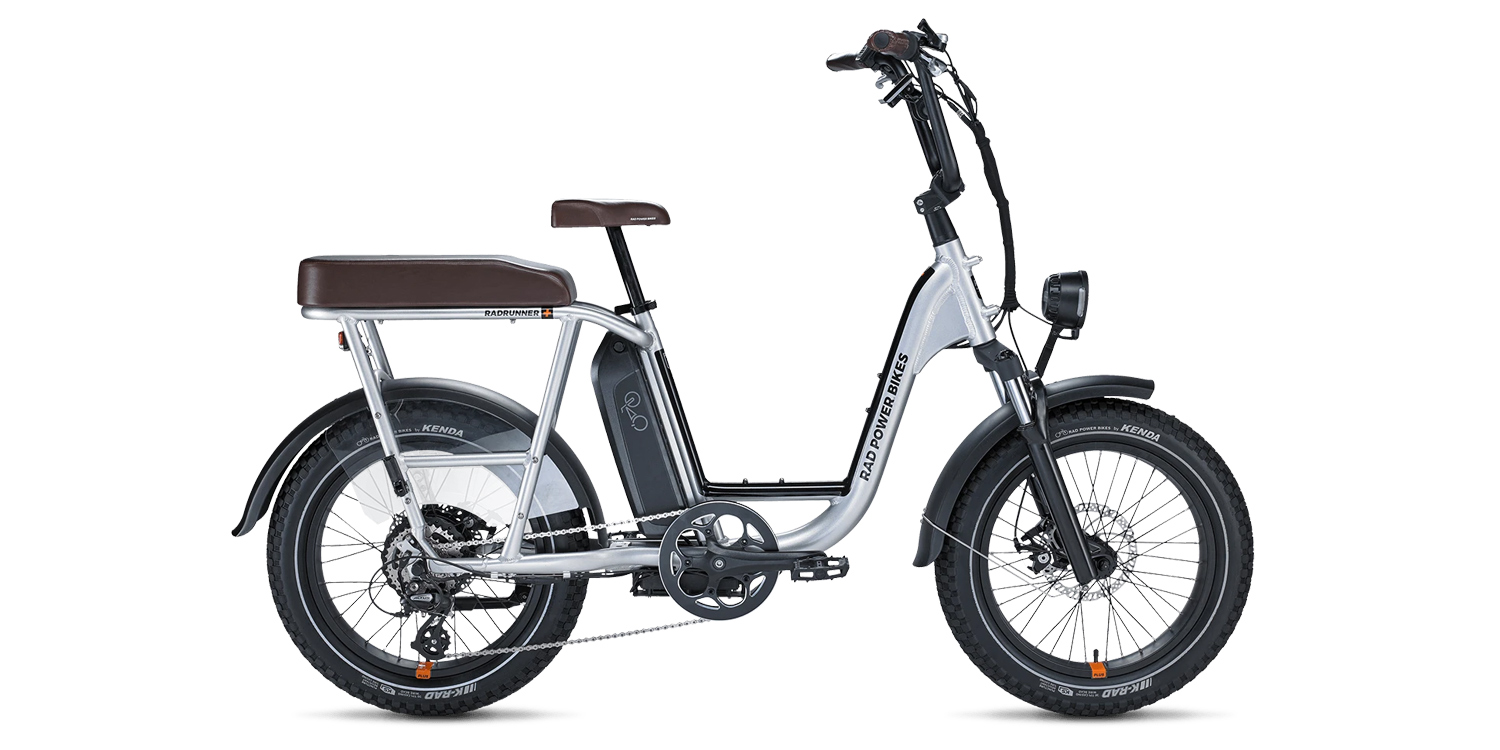
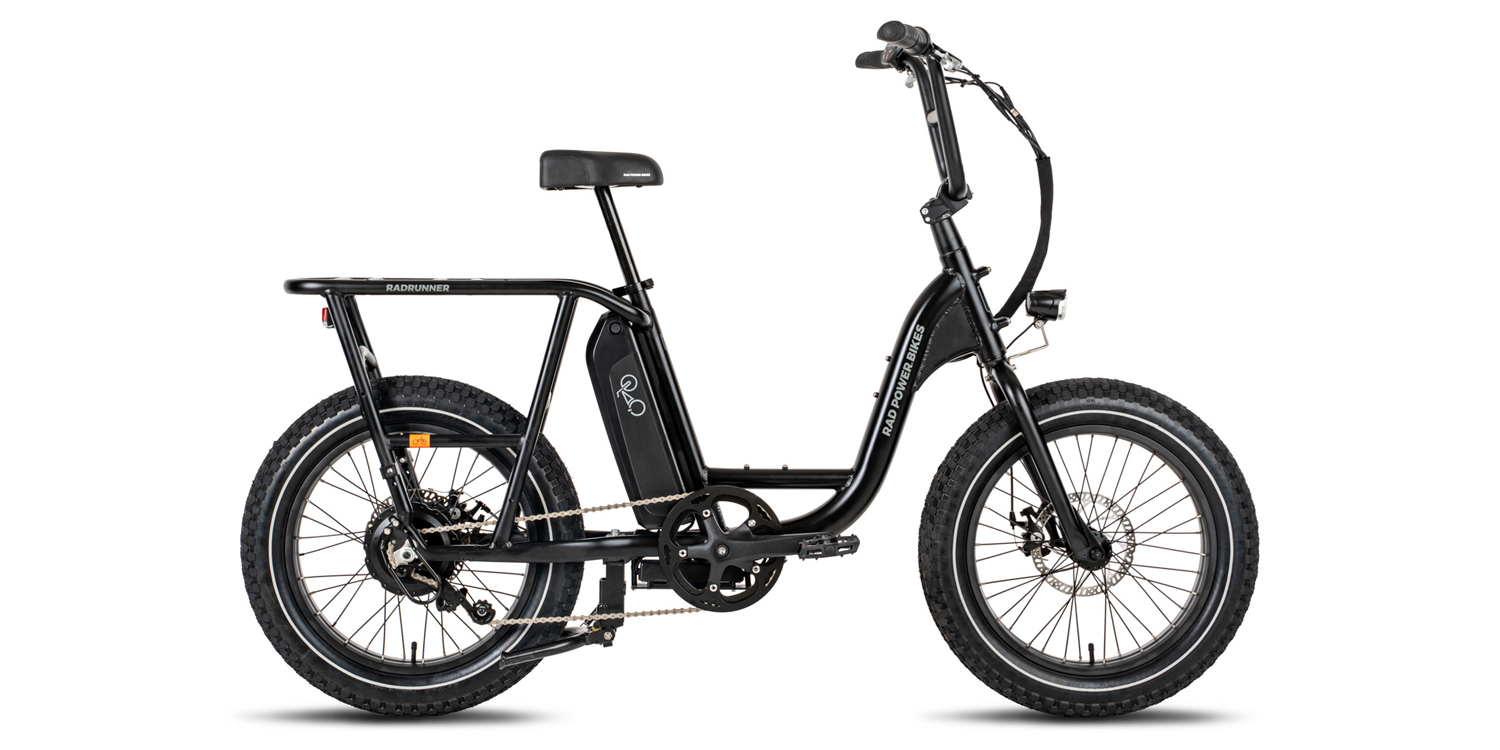
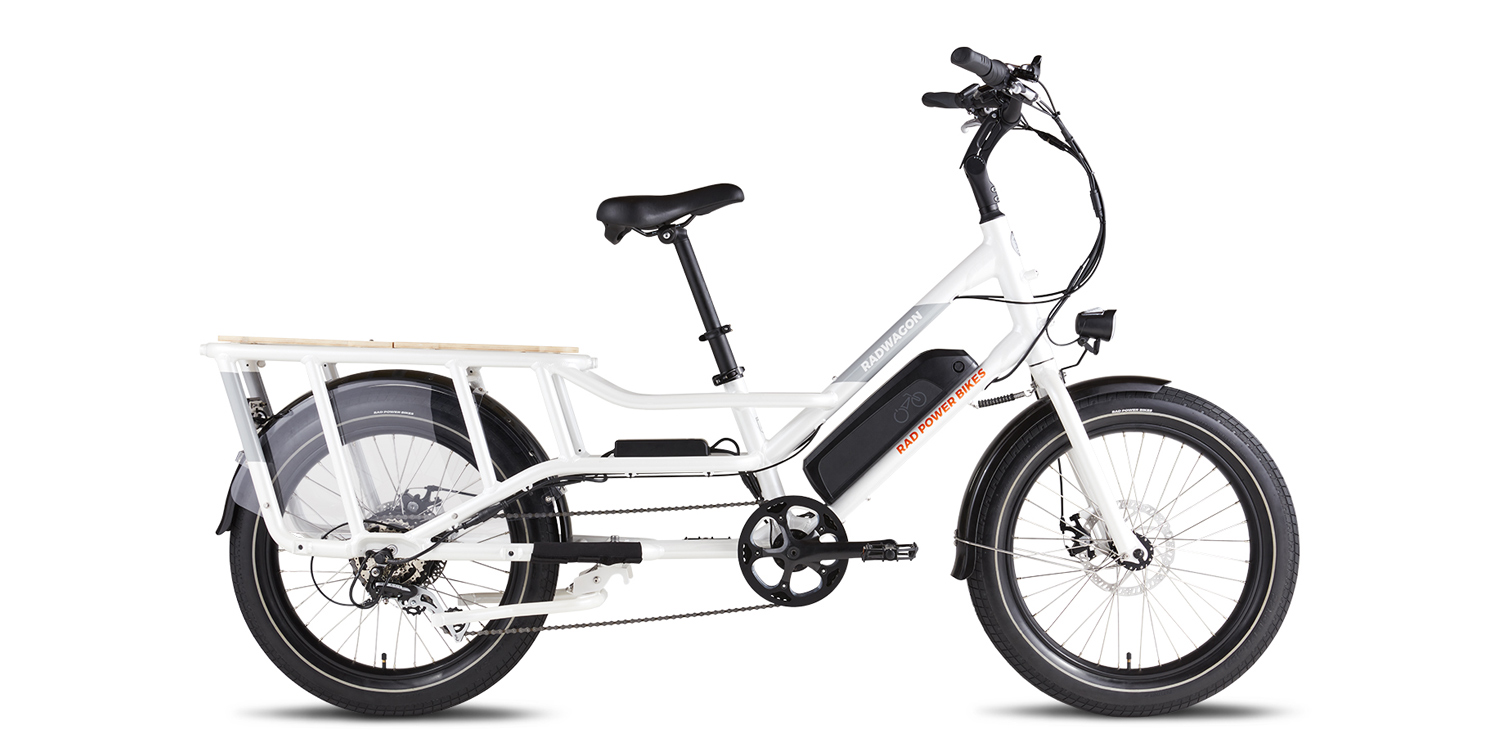
Mike says
Great reviews! Super knowledgeable and enthusiastic about your work! We are new to the e-bike experience and just ordered one of each of the 6 Plus bikes. You mentioned that the Shimano derailleur was more of an entry level item. What would you suggest to replace it with? And if we could get the model number, cost is not so much of an issue to us on this type of necessary bike component. We are going to strictly use them in the mountains of Washington state.
Court says
Hi Mike! I prefer Shimano Deore derailleur and shifter, but the Altus parts that come with the bike should work fine initially. Rather than swap them out, I’d try riding “as is” and then replace over time if they begin to fail. Altus is the entry level groupset from Shimano, and they are heavier, but tend to be pretty reliable if you keep the chain clean, derailleur aligned (using the barrel adjuster, just unscrew counter-clockwise as the cable sets into the housing over time). I would highly recommend working with a shop to upgrade or replace any parts over time and do this for both bikes at the same time.
Dave says
I’m concerned about how weatherproof the new battery tray is. Once you have removed the battery to store the bike on a bike rack, you could accumulate rain water over the battery terminal, even with the little rubber plug accessory. I guess you could slap a piece of duct tape over the entire battery channel, or buy a cover for the bikes. It might also collect a small amount of water when riding in the rain.
Court says
Hi Dave, I see your concern and am curious to see how things turn out for owners. The tray is concave and I didn’t look closely enough at the base to see if there are drain holes. I suppose that dust and other debris could accumulate in there, and it could be tricky to reach in and remove it over time. I feel like Rad generally makes great decisions, and the alternative of a bottom-mount battery is even less appealing to me because it makes drops much easier. Sometimes there is no perfect decision, the companies just have to pick the best combination of durability, ease of use, aesthetic, and pricing. Many other companies have top or side mounting packs that function in a similar way, like the popular Reention Dorado battery, so this seems to be a proven concept.
Lucie says
Between the rad mini-foldable, and this bike rad-rover 6 plus, which of the two gives you more bang for the dollar? I see the brakes on the rad-rover 6 are an upgraded to hydraulic disc brakes. The reach on the rad mini is 18” while the rad-rover is 15”- that’s quite a difference! The rest seems pretty much the same to me (I don’t know much about bikes).
What I need is a bike where I have minimum reach (I want to sit as straight as possible). I’m 5’6” tall, with mid-back issues.
The next biggest requirement is I will be mostly driving on rural dirt roads. So everything seems adequate on either.
Please help me decide between these 2. I would use the bike a couple of times a week for a total of 60km max/week. May to mid Oct. In Canada the rad-mini is $1,850, and the rad-rover 6 is $2,400. Is the $550 differences warranted??
Thank you
Court says
Hi Lucie! Great job explaining your situation… If I were in your shoes, I’d go for the RadRover Step-Thru 1 or the RadRover 6 Step-Thru. The biggest difference is that the RadRover 6 Step-Thru has hydraulic disc brakes that require less hand effort, and the battery is easier to get off.
The full sized models have better suspension forks, are smoother over bumps and cracks because of the lower attack angle (larger wheels roll smoother than small ones that fit down into holes and cracks easier). Yes, the full sized model costs more… but it will have a sturdier frame because it doesn’t have to fold. The shorter reach can be more upright for you, and you can even rotate the handlebar back a bit to make reach shorter! I also have some back, shoulder, and arm sensitivity, and the full sized bikes are generally more comfortable… but definitely in this case. The RadMini is above average for a folding product, because of the fat tires, but the full size is even better! Sorry for the slow reply for your comment, I hope this reaches you in time :)
Michael LaPlaca says
Court, I have been researching ebikes and following your reviews as the main source of info for 2 years. Now… I’m really confused. Since we travel to warmer locations in the winter we were planning on bringing our bikes with us, thus the thought of folding bikes. However, since seeing your review of the Rad Runner 6 and your stress of comfort (since I have hip sensitivity) starting wondering if a full size bike would be best. With that said are there bike racks that could handle 2 bikes or should we stick with a folder? Trust your judgement.
Court says
Hi Michael! Great question and sorry for the slow response here. The folding fat tire ebikes are still pretty comfortable. The challenge with the full sized fat bikes is the heavy weight. Yes, there are some racks that can handle it, but getting them up could also be hard on your hip. Perhaps a folding model with removable battery could be best if you are able to fit it into your vehicle? Check out this video I made with my Dad, who has two RadRover full sized models, where we show how to get them on the racks and stuff. Yes, I’d personally prefer the full sized models, but the folders do have some benefits.
Mike LaPlaca says
Court! You’re the best. Thank you so much for the personal response. I don’t know how you find the time. I did visit my local shop and rode the Sinch Step-Thru. Fun bike, my wife loved it, but it did feel a little like a clown bike with the small wheel size. Sinch would probably be the best for us, but I’ll reflect on your video a little and go whatever direction the wind blows. Thanks!!!
Court says
Awesome! Glad I could help Mike, good luck and I’d love to hear how it goes for you. I’m sure you’ll have a great time whichever bike you choose :D
Kathy Krakenberg says
Hi there. Total rookie here. I have ordered this bike from Rad. Claimed four day delivery, not so much. It says four days, then I got an email that said two weeks and now I have another email saying August 1st. Disappointed as my holidays are now. Oh well, its the way of the world now. I just watched the video of you and your dad discussing the hitch for carrying the bikes and a seat post with built in shock absorber was discussed. I went onto the Rad site and see it there and then went to Amazon. I don’t understand what the measurements mean. On the rad site that one shows as 27.2mm by 400mm. I’m assuming diameter of the tube, not sure what the 400mm is. Length of post perhaps? On amazon they have various sizes but theirs 27.2 is *350? If it is length I’m 5’6″ so I may not need 400 if that’s even what it means.
I did order a seat off of Amazon and wonder if it will fit with one of these seat posts as it does have built in springs and I wonder if they might interfere with the seat post mechanism?
Any help you can give me would be greatly appreciated. I’m hoping to have everything I need before it arrives and a local bike club said they’d help me with the assembly. I’ll likely buy a membership towards their club as a thank you. I appreciate this review and the information I have learned as I will be riding on my own most likely. Trying to get over a really bad case of pneumonia and a really bad lower back plus I am not a light weight. All I’ll say is more than your Dad. So I’m looking for comfort as best I can find and the power assist will help me to rebuild my lung capacity. I only had the power assist at 1 and was fine. Perhaps a higher setting for hills. Walking is now out of the question because of my back so this is my idea to get back into shape. From my reading I think I will be buying a replacement harder spring for the seat post than I can get on Amazon for $30 and there is a video showing how to change it. I just want to make sure the seatpost and seat will work together.
I broke down and got the ladies step through version. Right now, swinging that leg over the seat isn’t a problem but five years from now it may very well be so I’m thinking ahead. I also benefited from the discussion on that video regarding the water bottle cages. I have the front basket coming with the bike so I can put it there and being the step through that eliminates all the things that would attach to the crossbar on the mens version. I guess you don’t call them men’s and ladies anymore. I may just go with the one you mentioned from Rad with the insulated bag to make it easily accessible.
Any help you can give me would be very greatly appreciated as this rookie needs to get out on the road and back to a healthy lifestyle.
Take care and thank you.
Court says
Hi Kathy! You got it right… the first number is the diameter of the seat post 27.2mm is very standard. The second number is the length, and 400mm is longer than average. Most seat posts are 300 to 350mm long. Sometimes, people get longer posts if they are very tall. Other times, people actually have to cut the post to be shorter so they can lower the seat all the way down without the post bottoming out in the frame, or hitting the bolts from a bottle cage.
The saddle you linked to on Amazon looks great, and in my experience almost any saddle will work with any seat post. There are strange exceptions, but it’s very rare. I think you’ll be fine! And yes, it’s okay to go for a step-thru “ladies” frame to make it easier to approach and stand over. I like the frames because they are easier to share with friends, and much easier to step on if I have a rear rack with bags and cannot swing my leg around the back. Anyway, the local bike group should be helpful, it’s nice that you want to support them. The RadRover is a good bike for stability, comfort, power, and nice pedal assist and throttle mode operation. I hope it arrives smoothly for you and you can enjoy it this Summer and Fall!